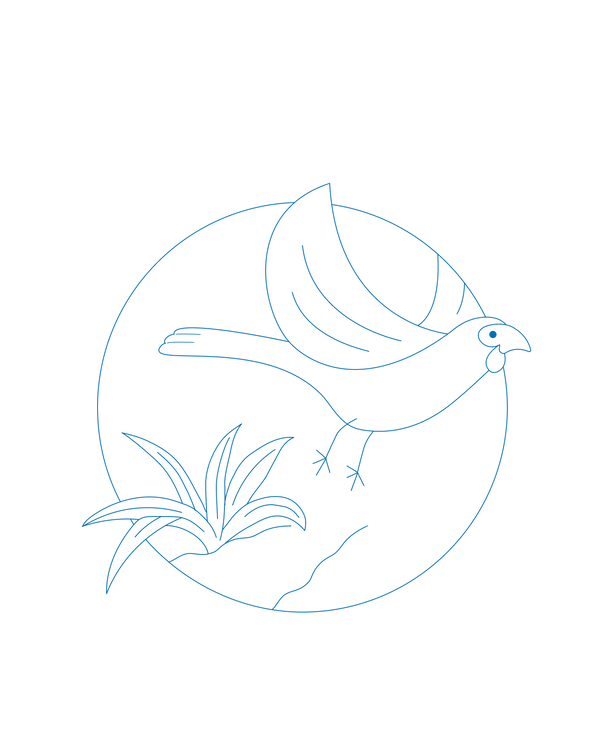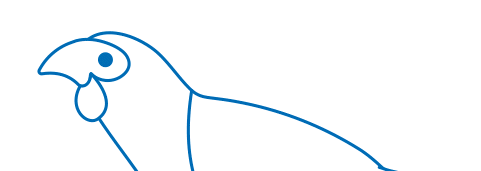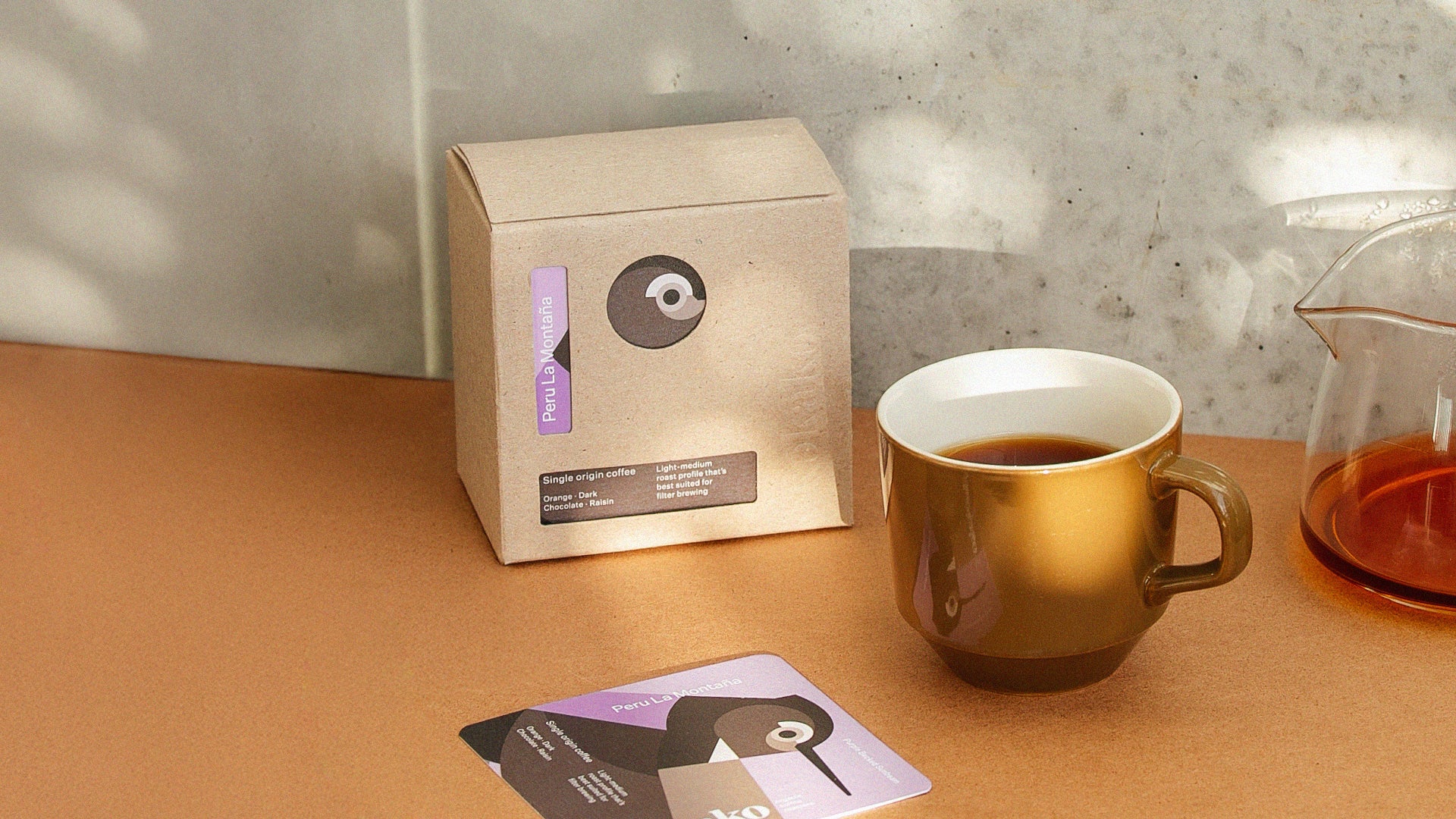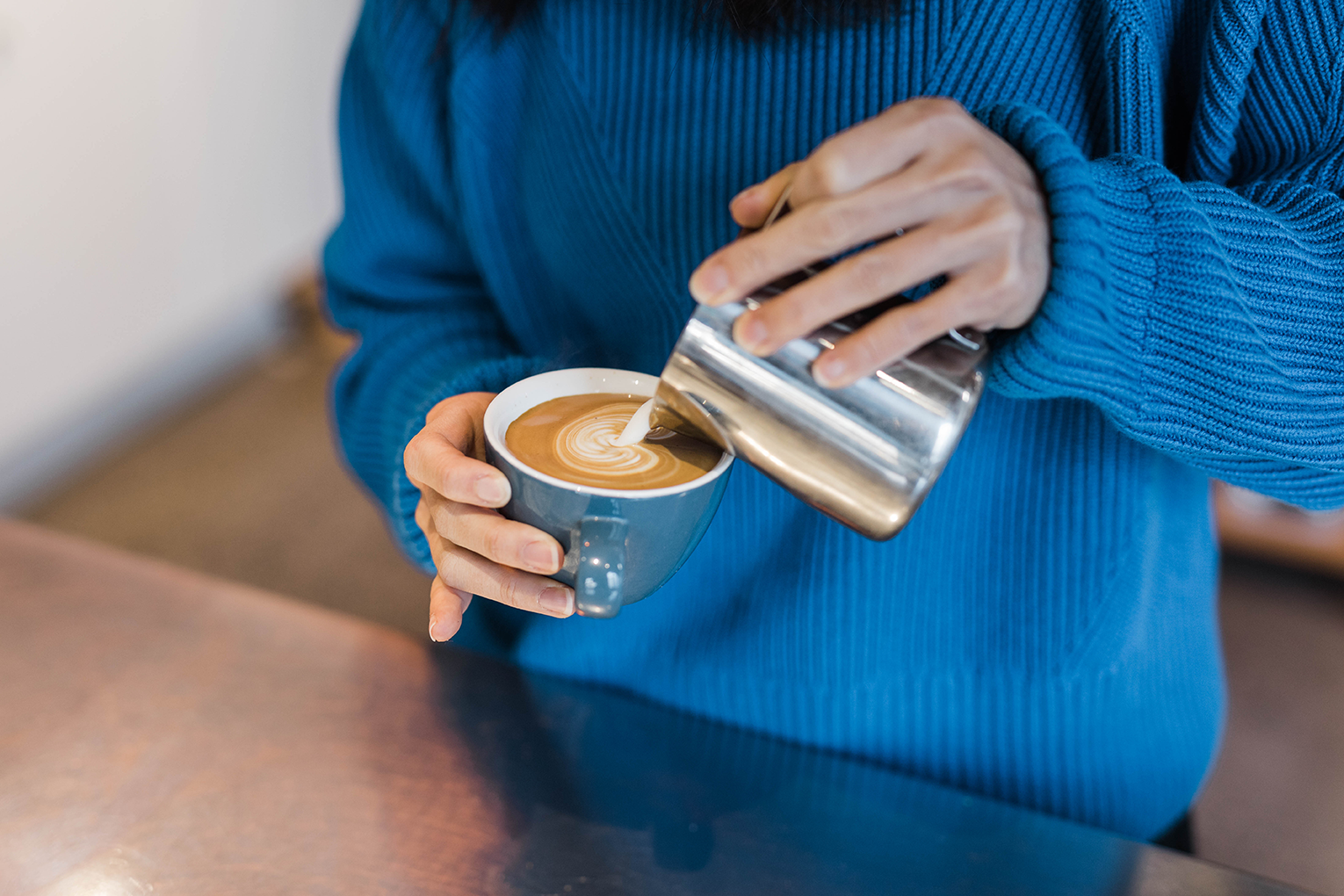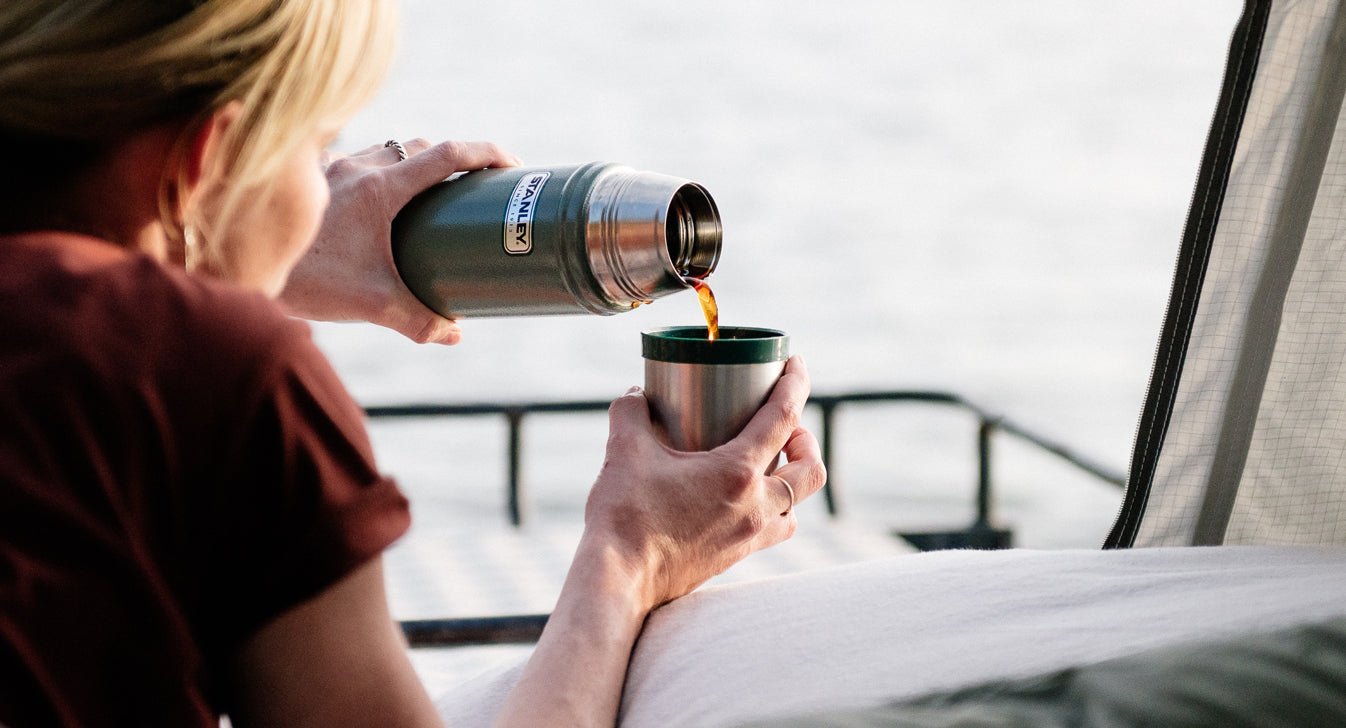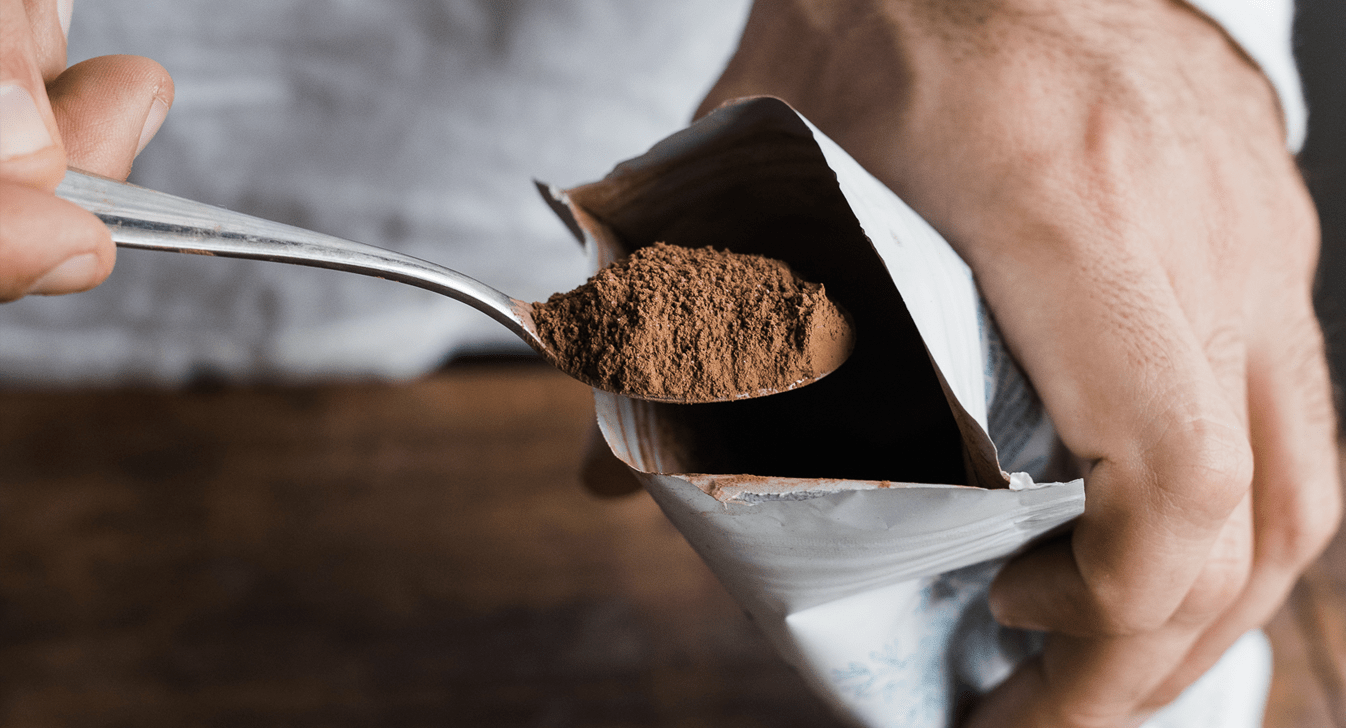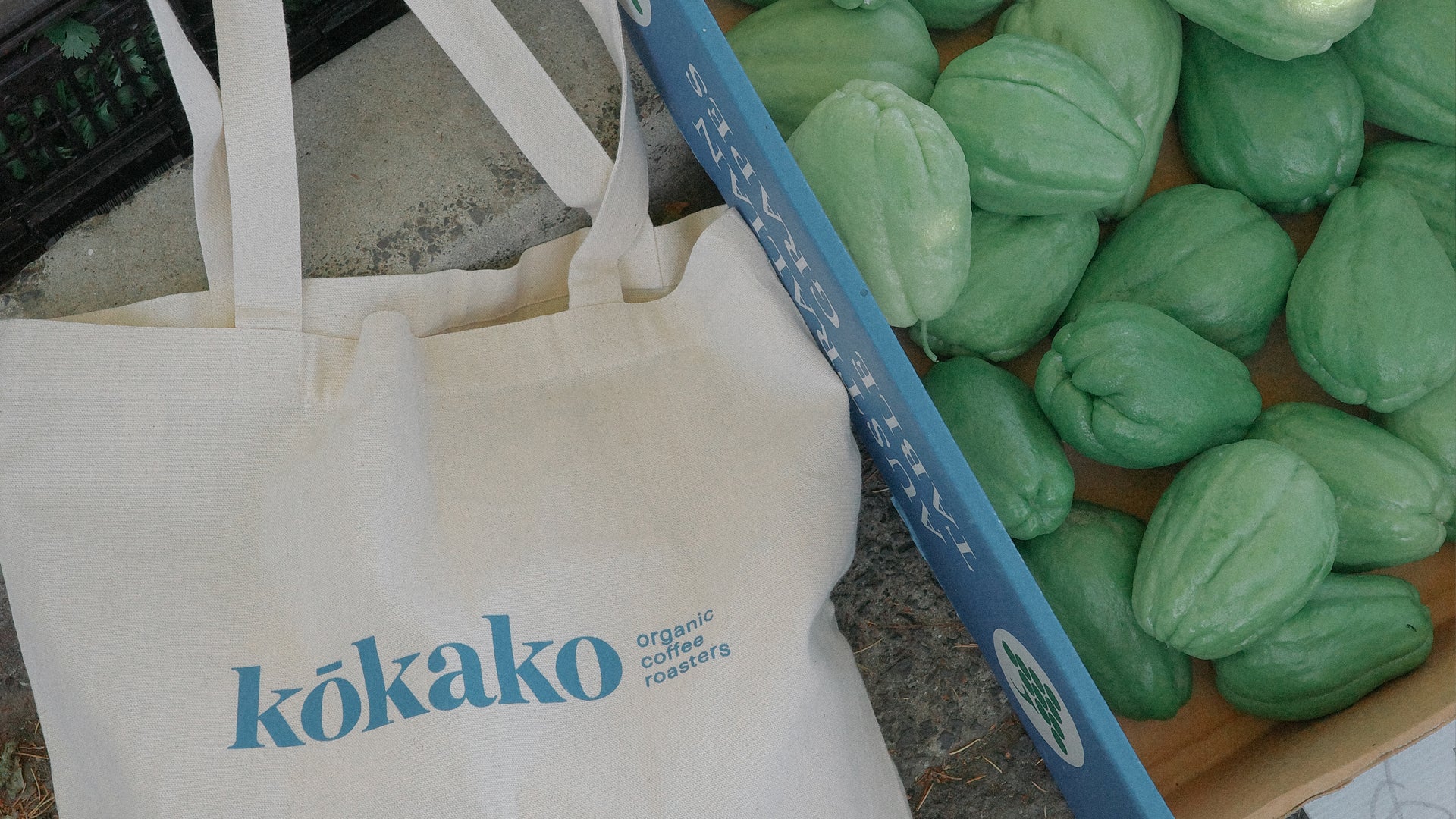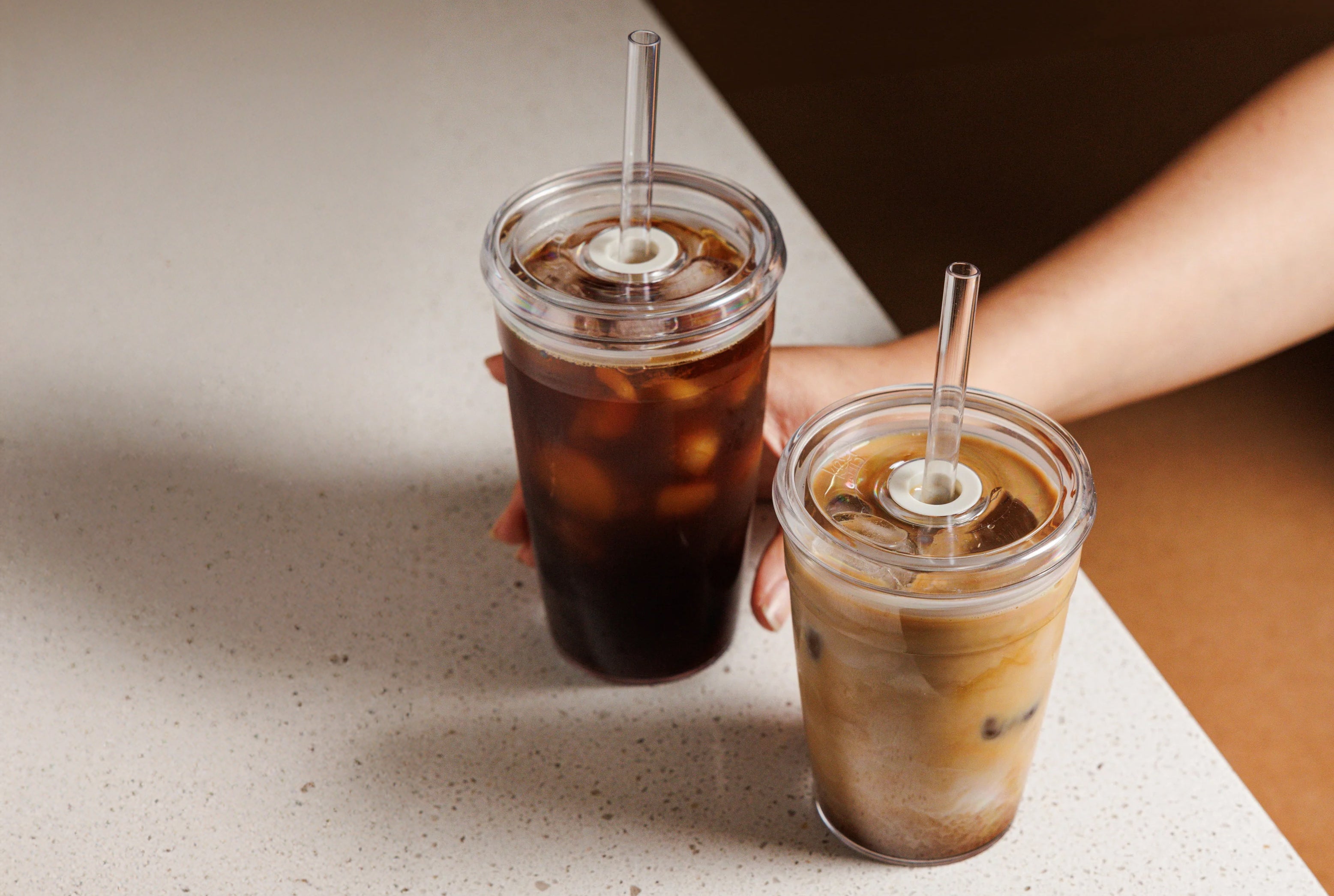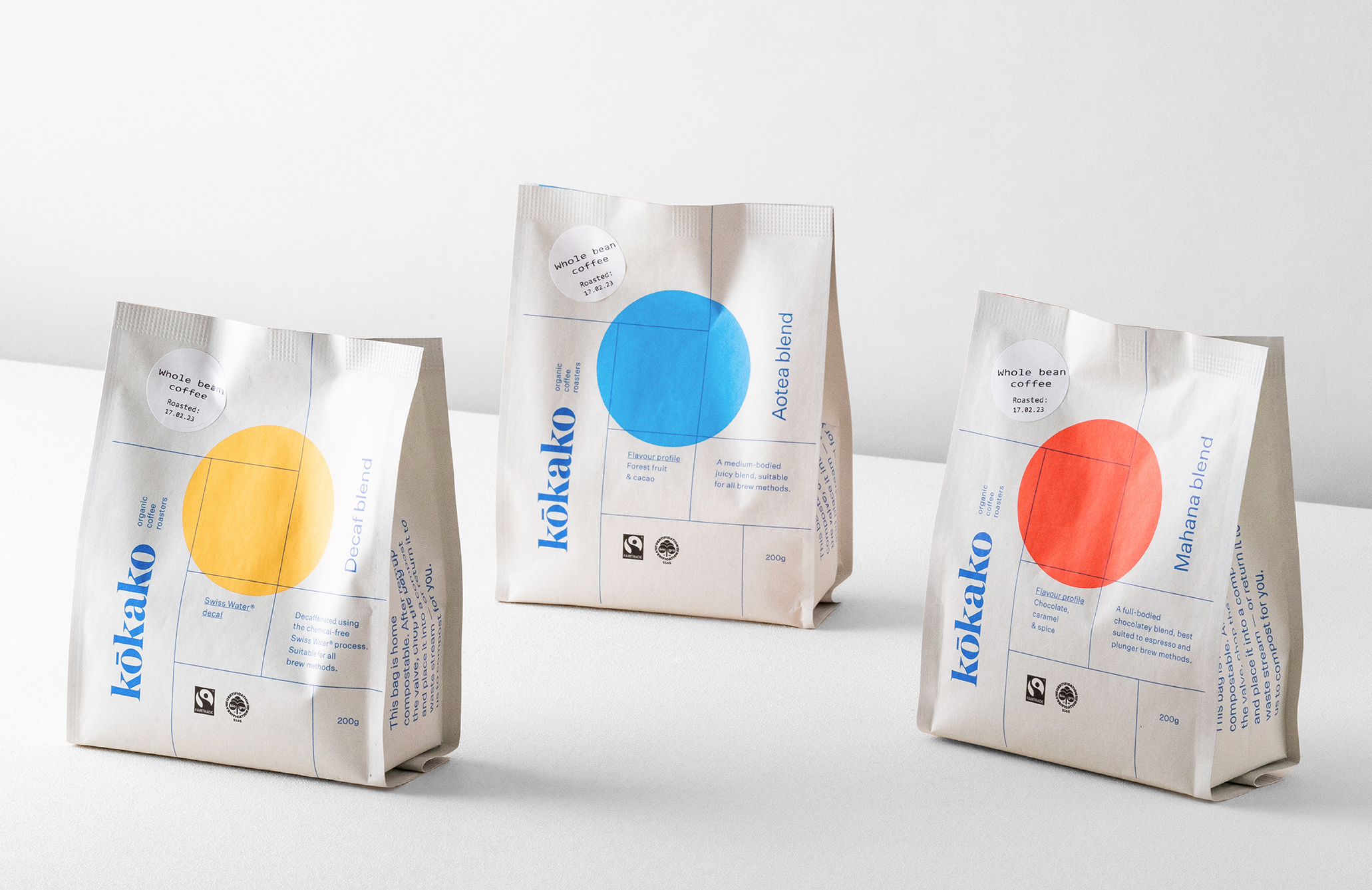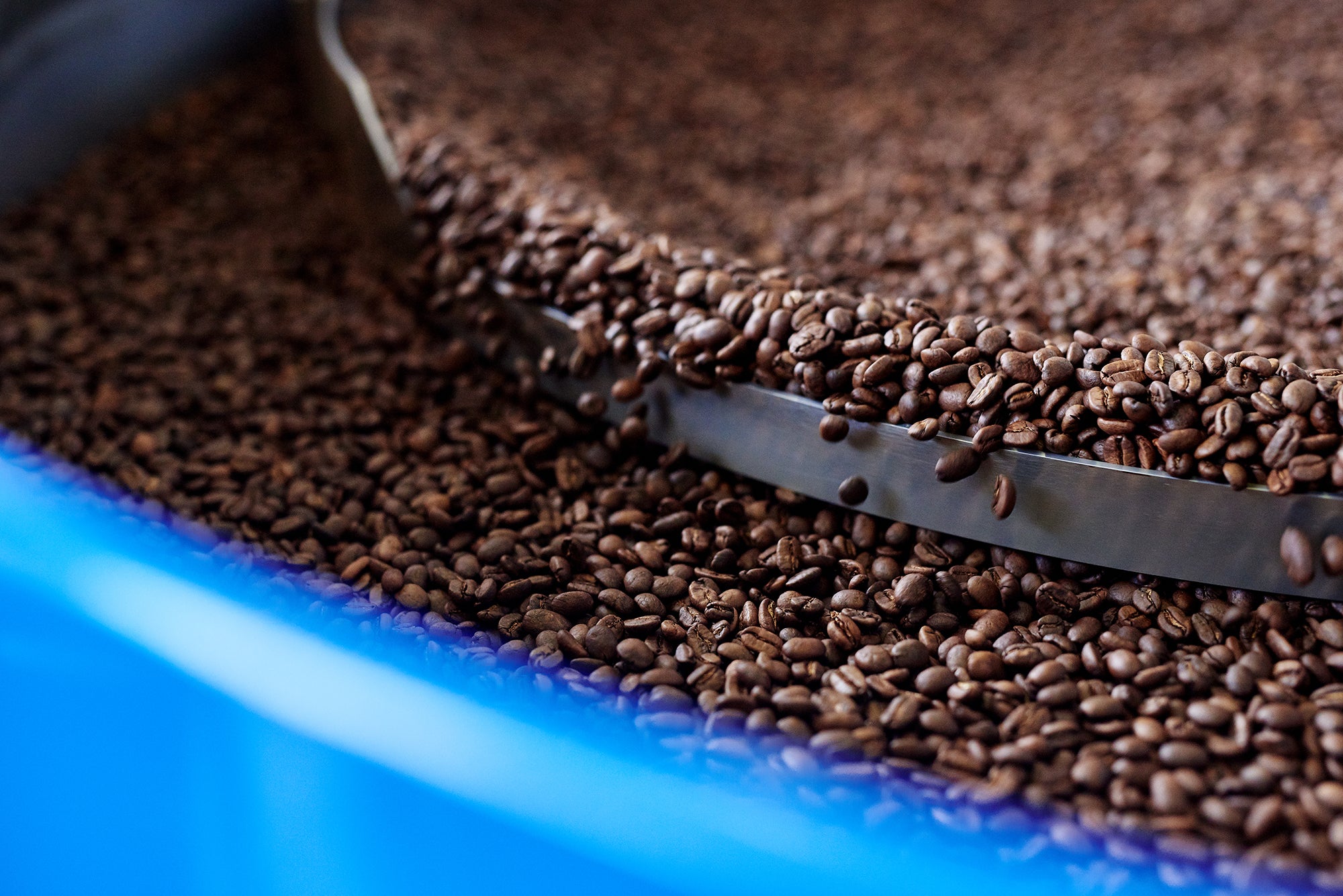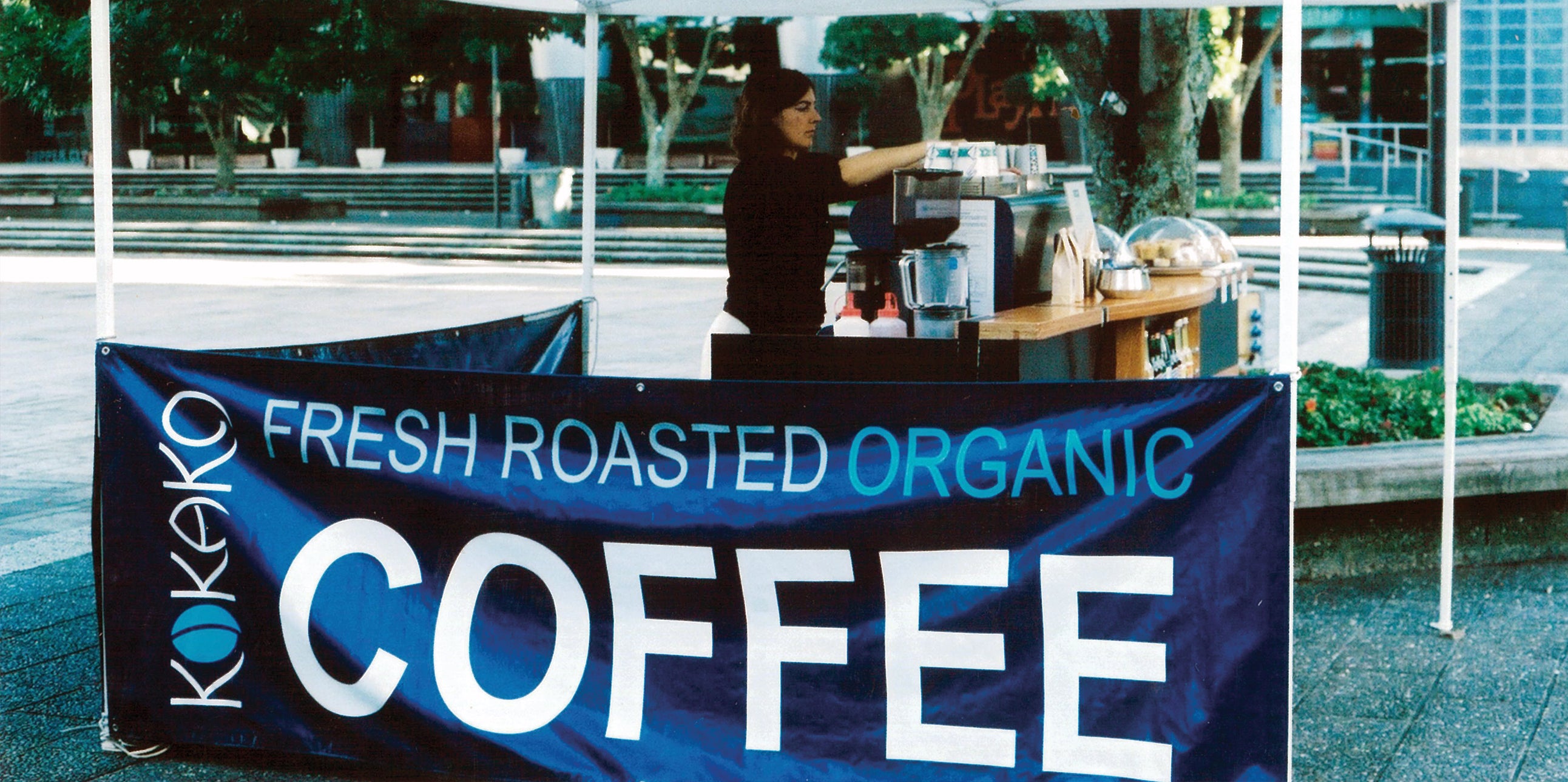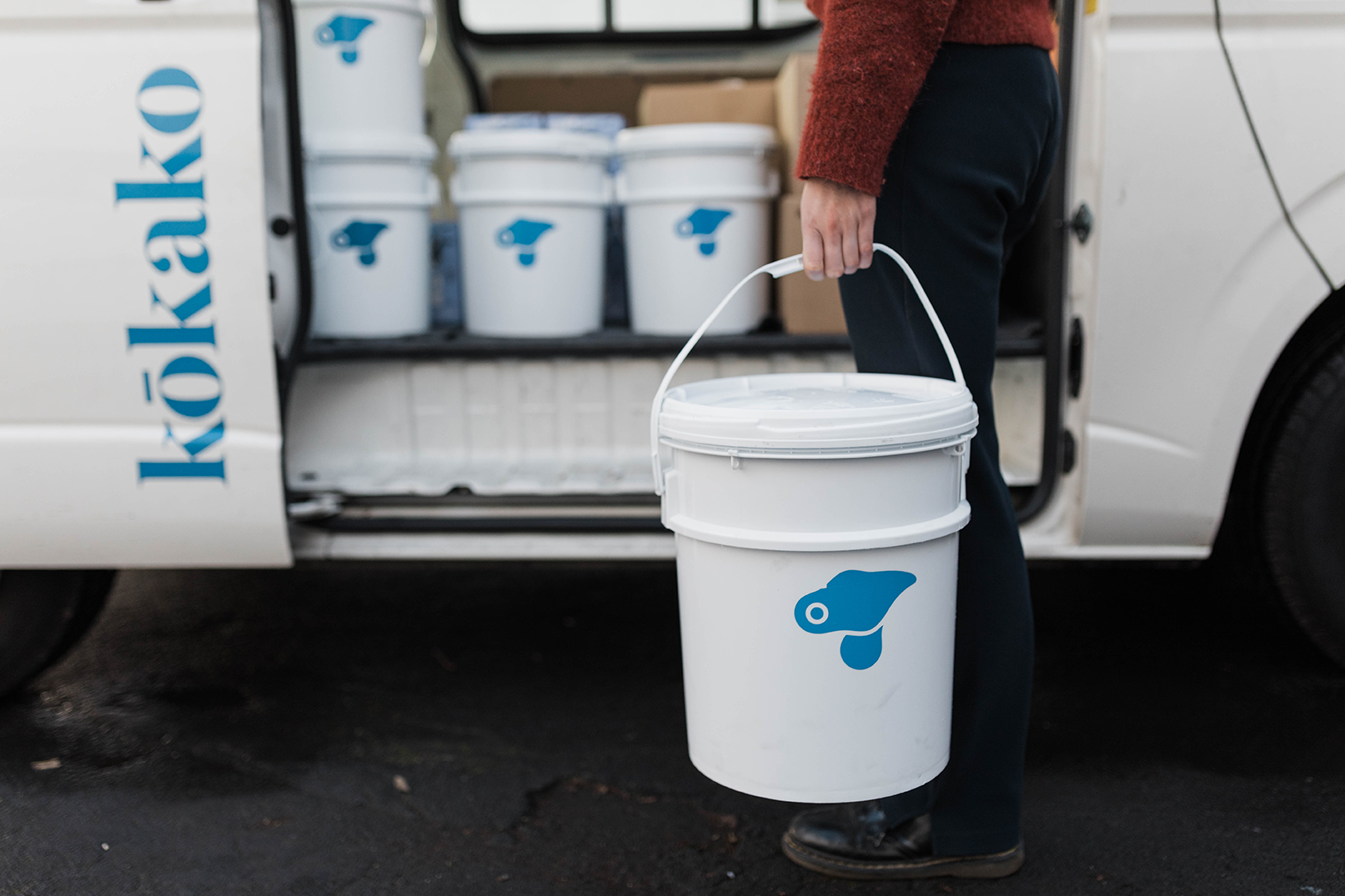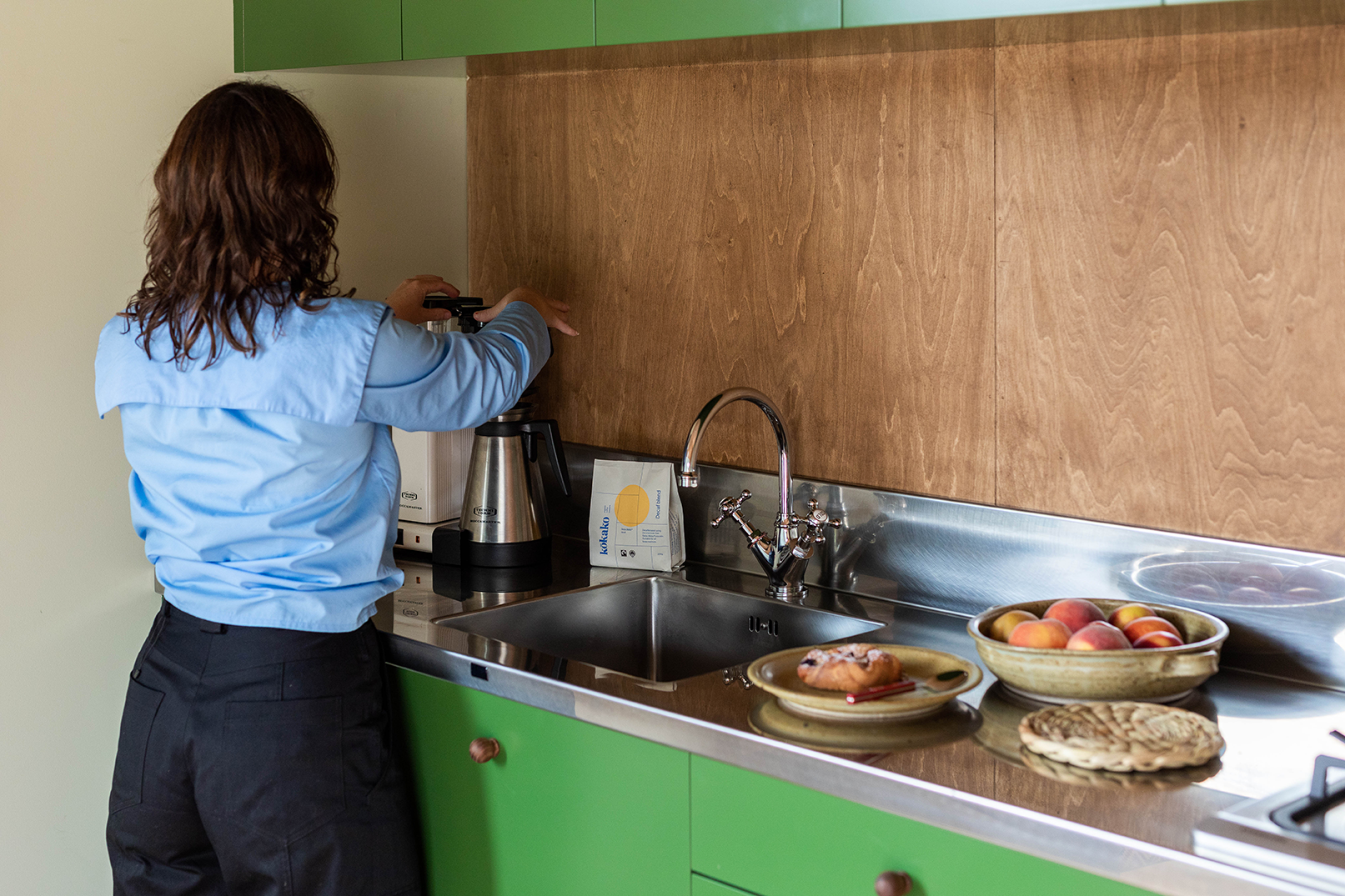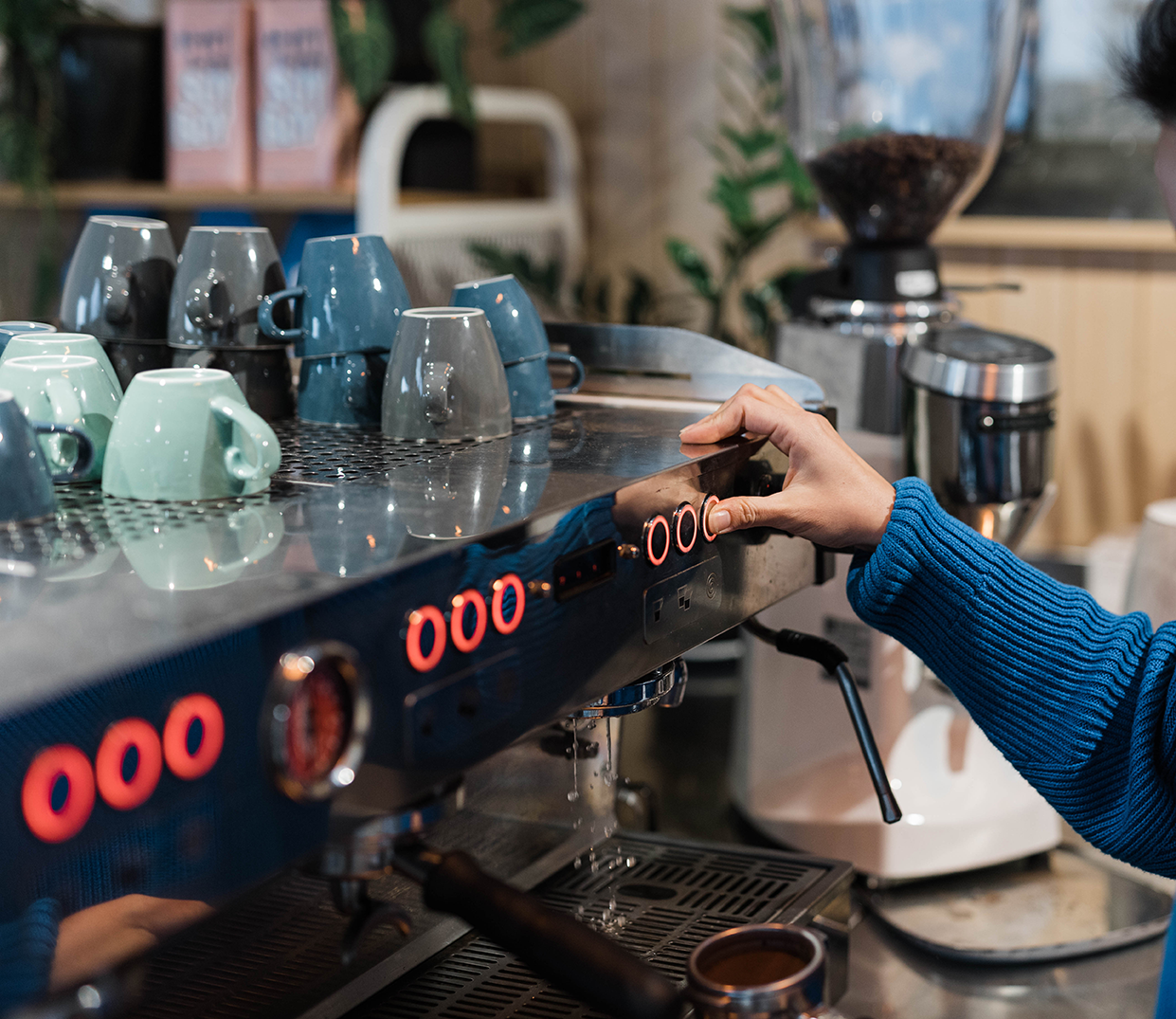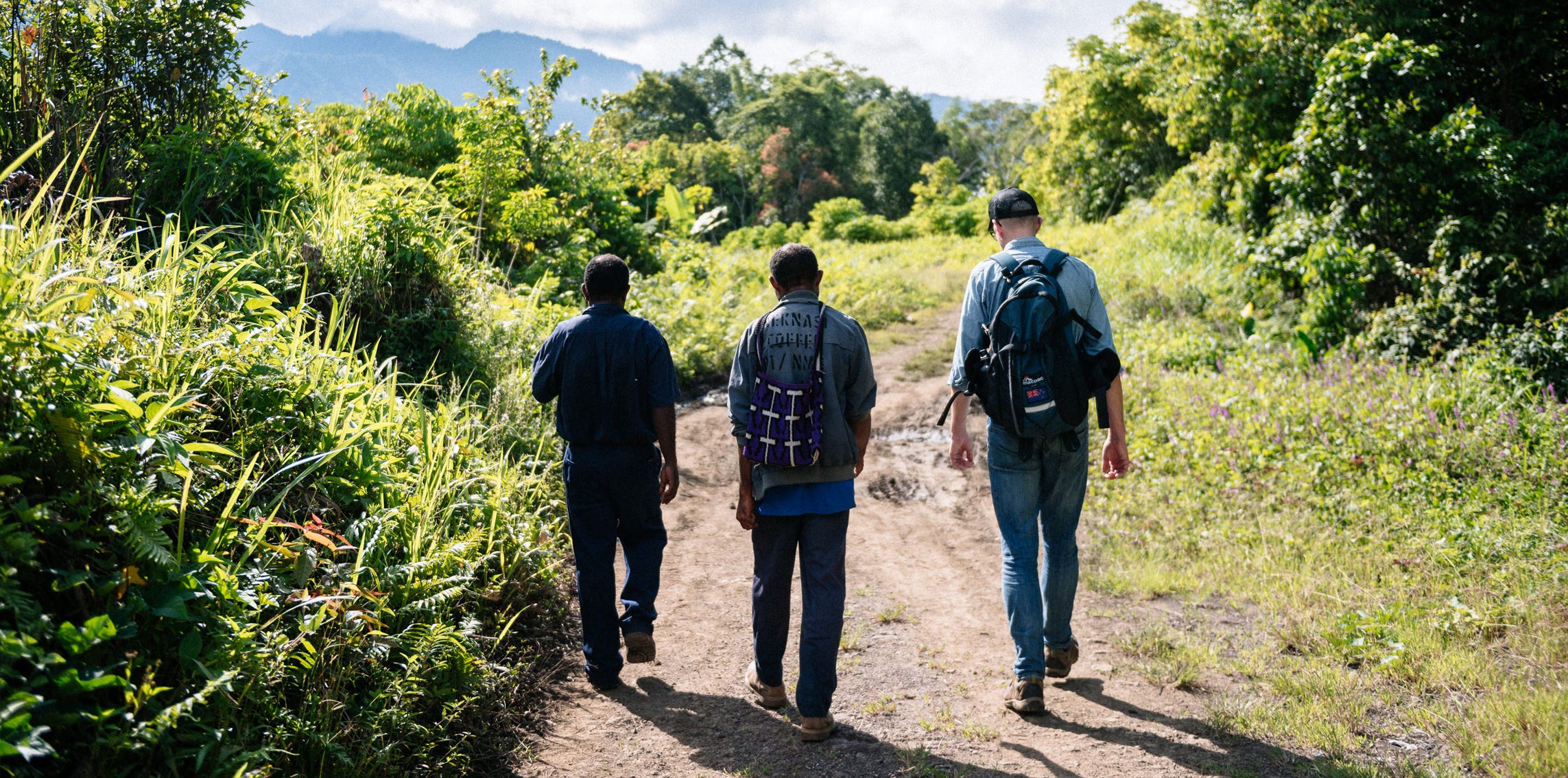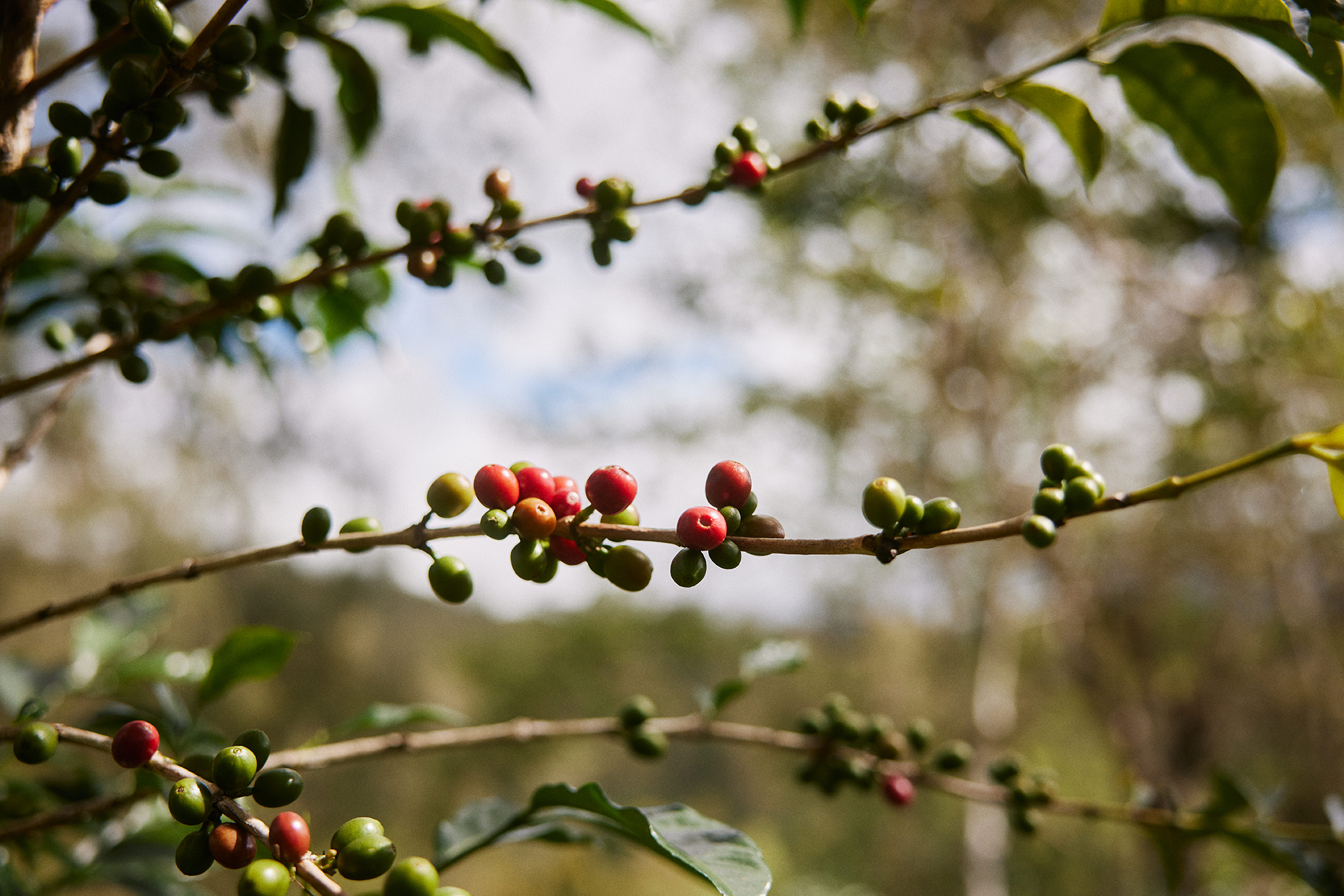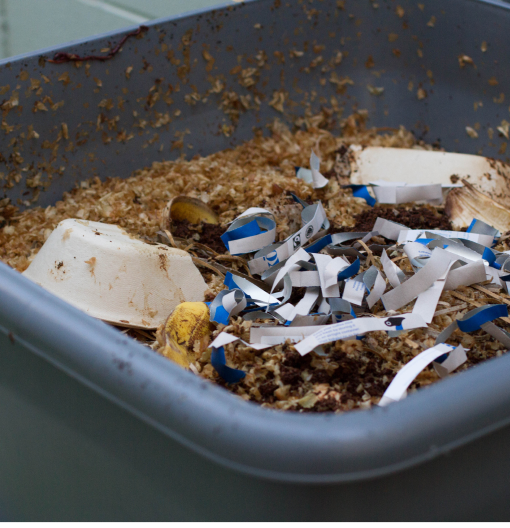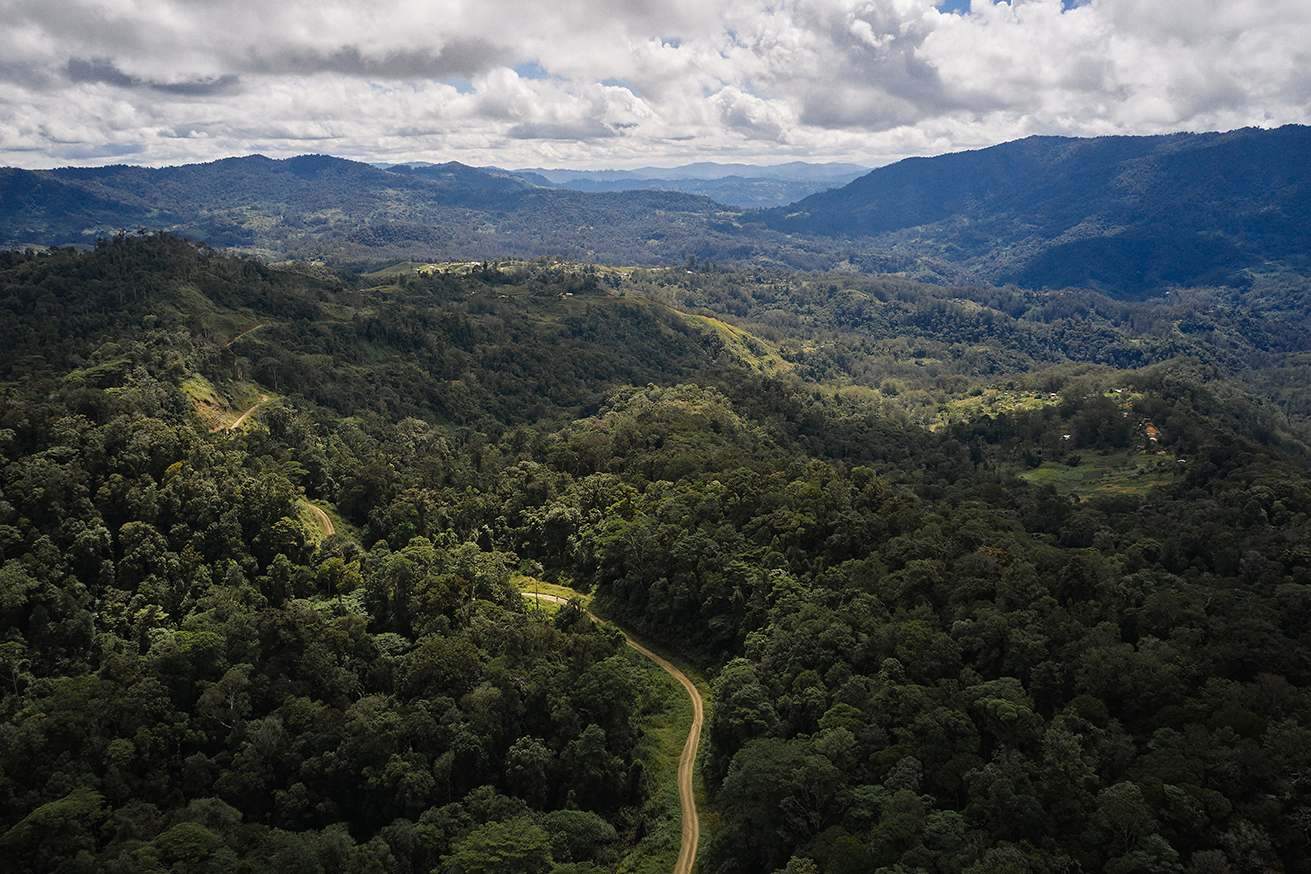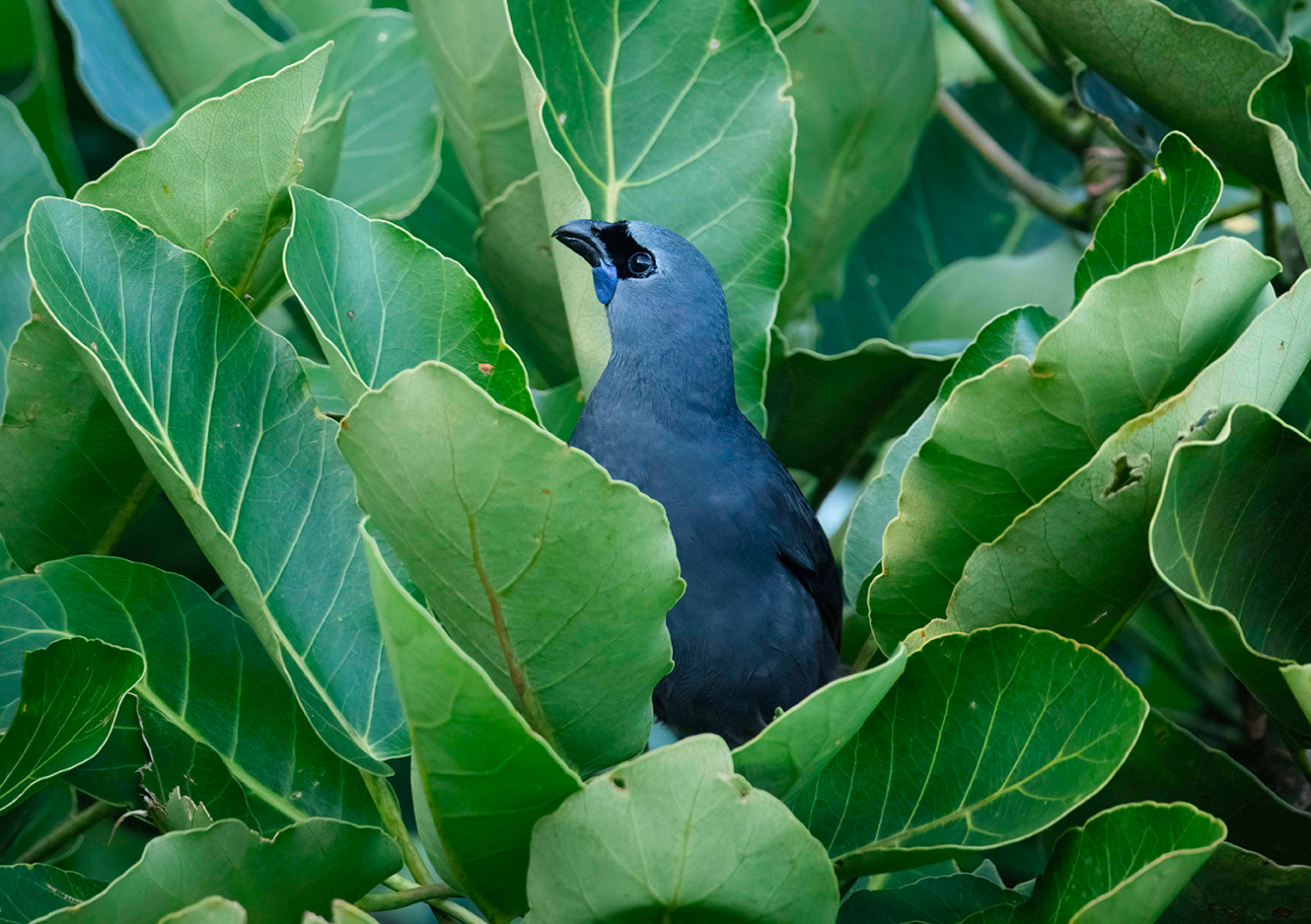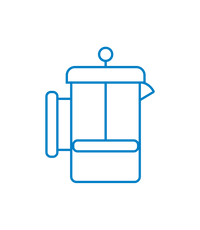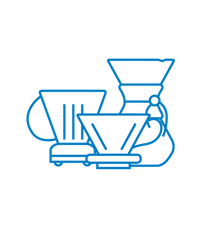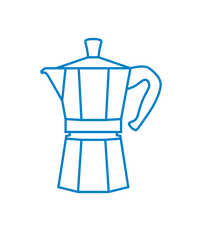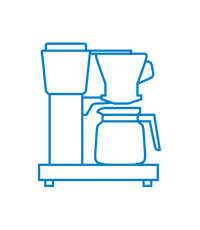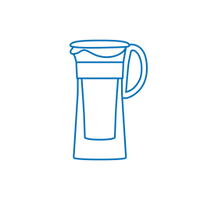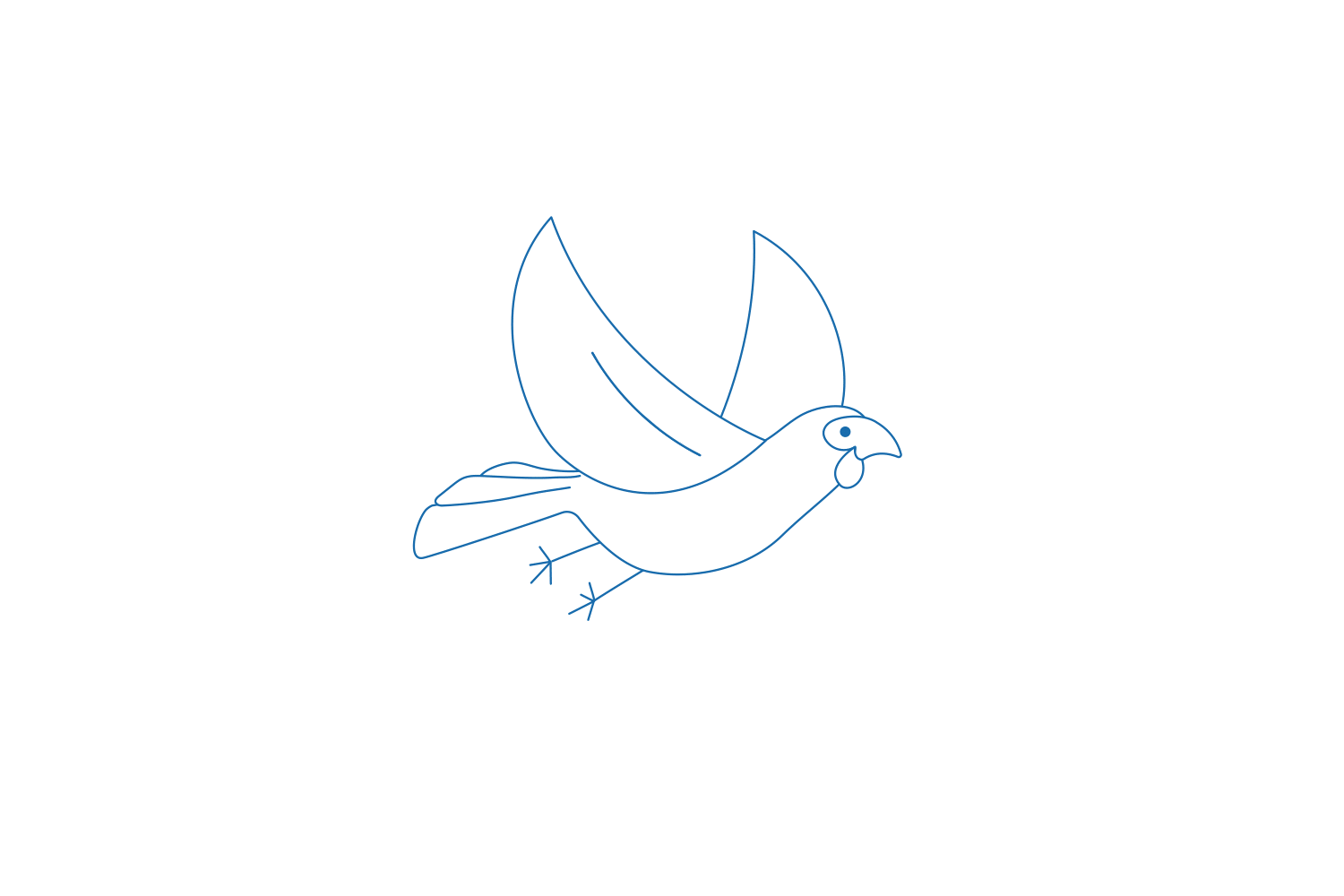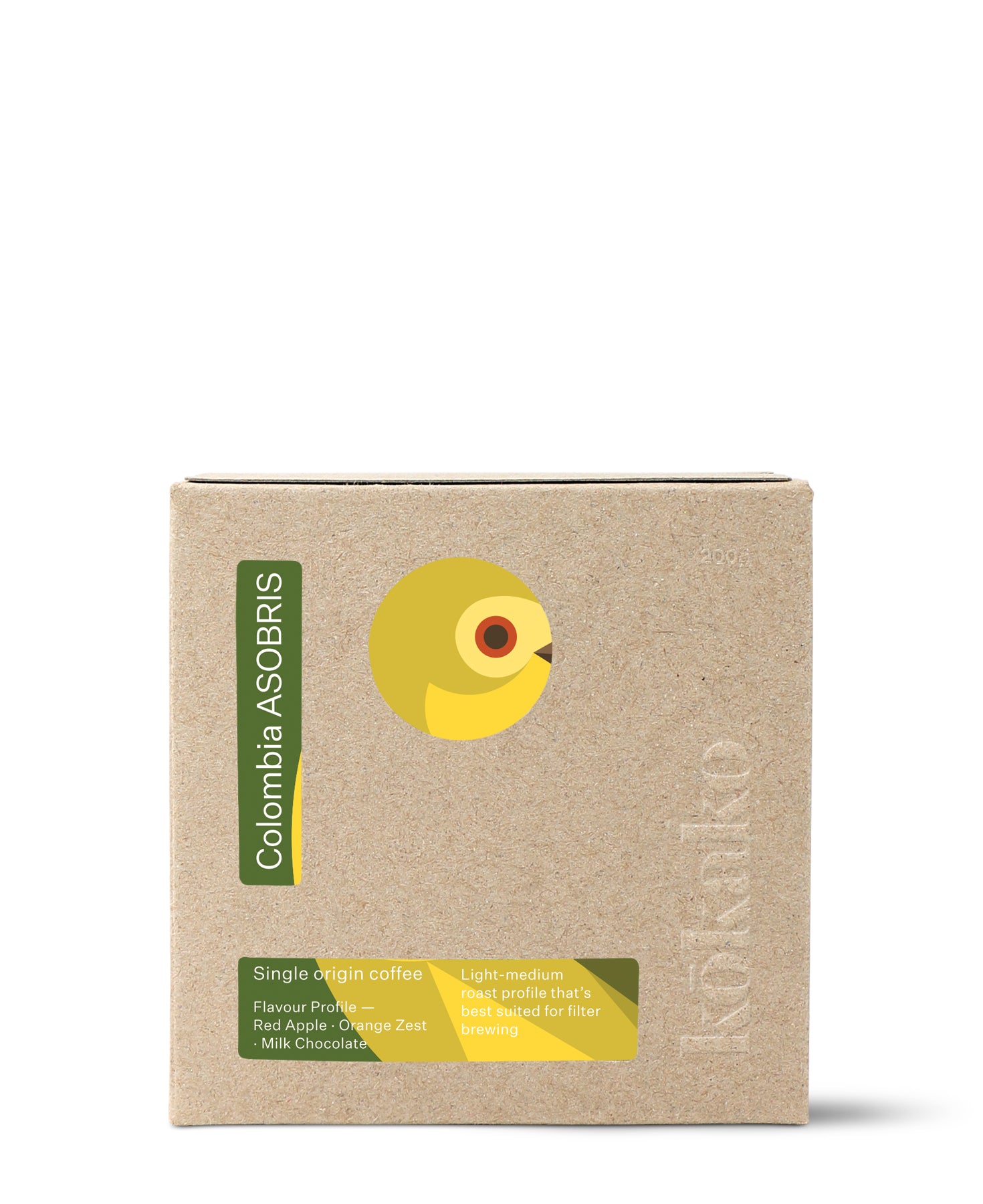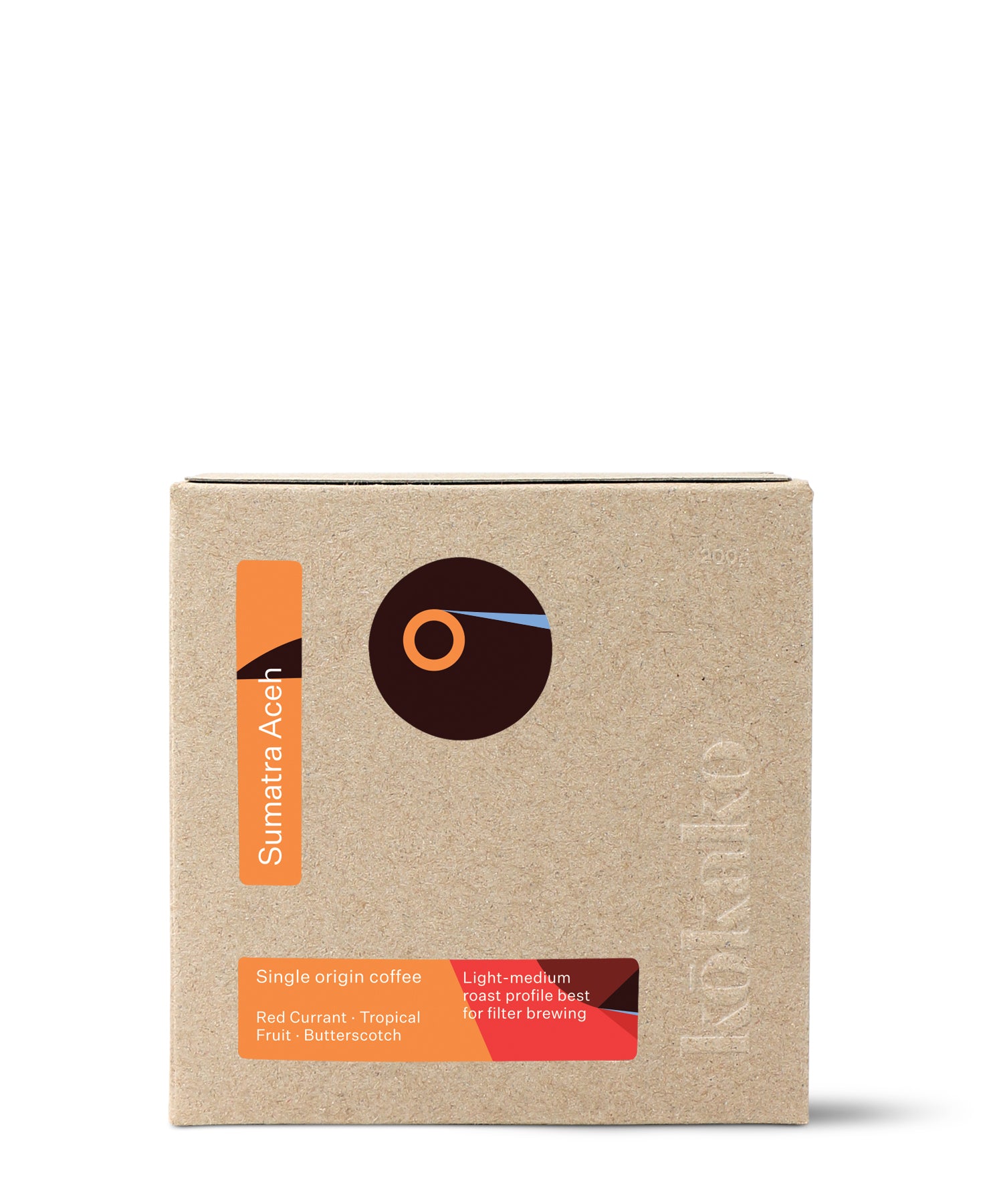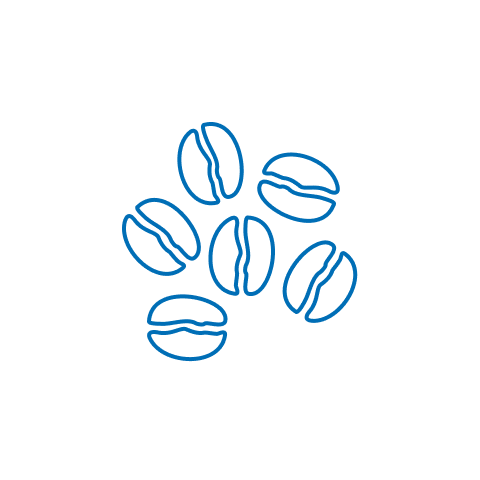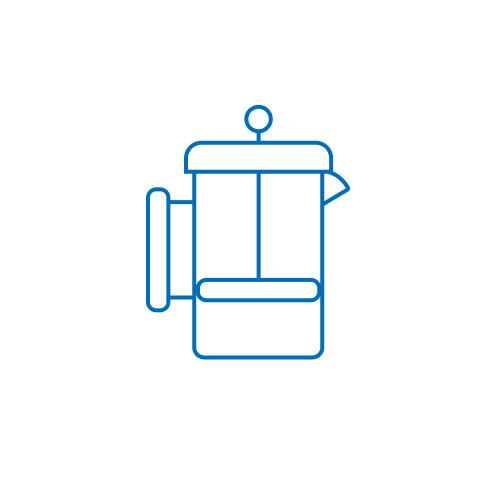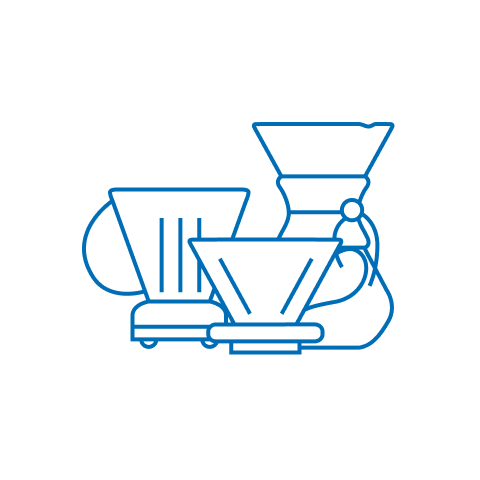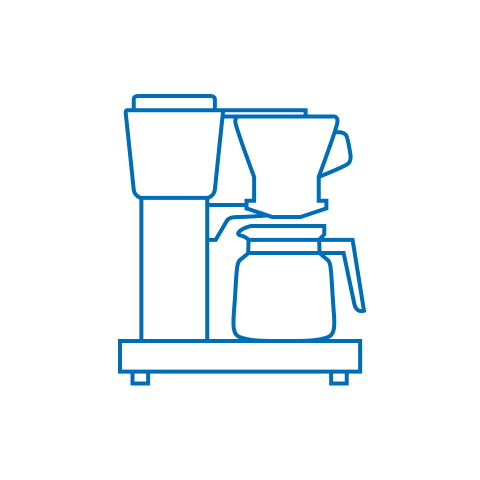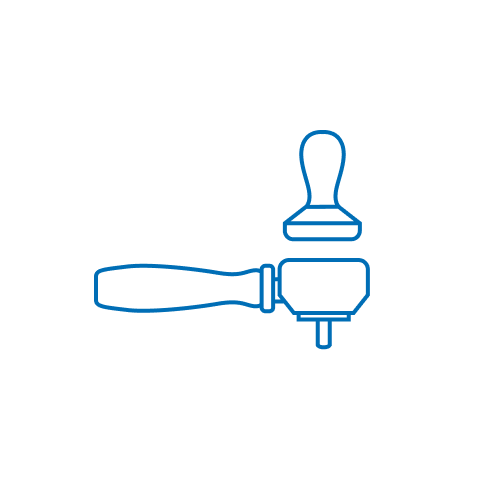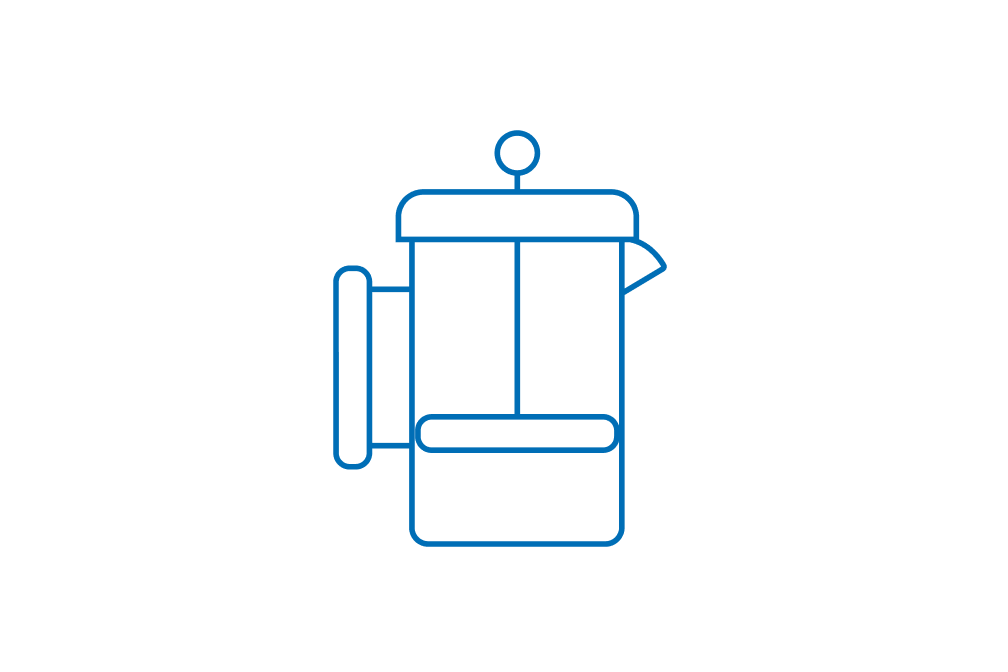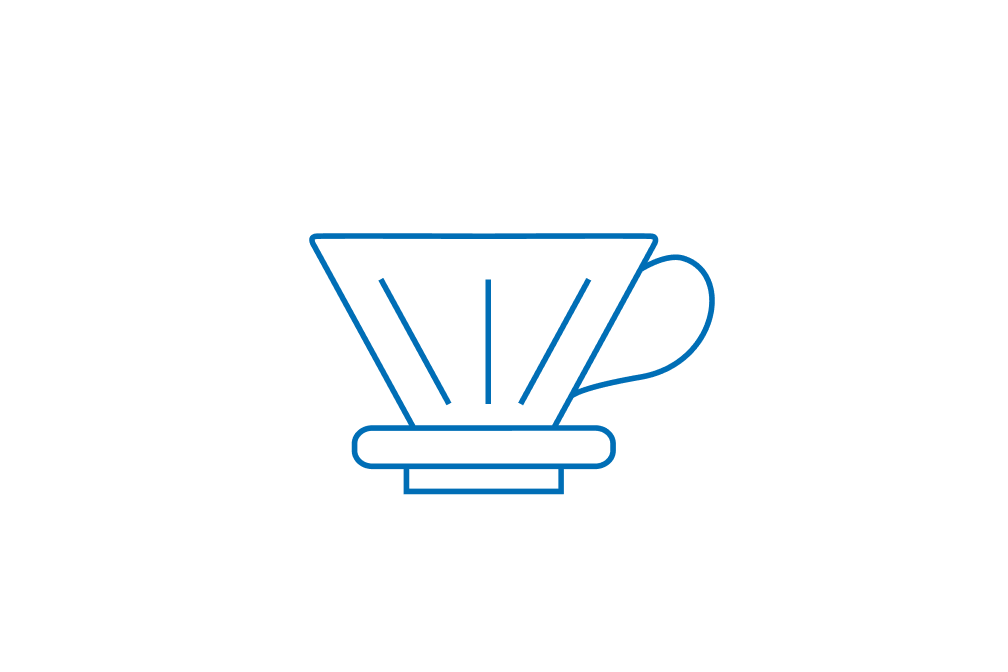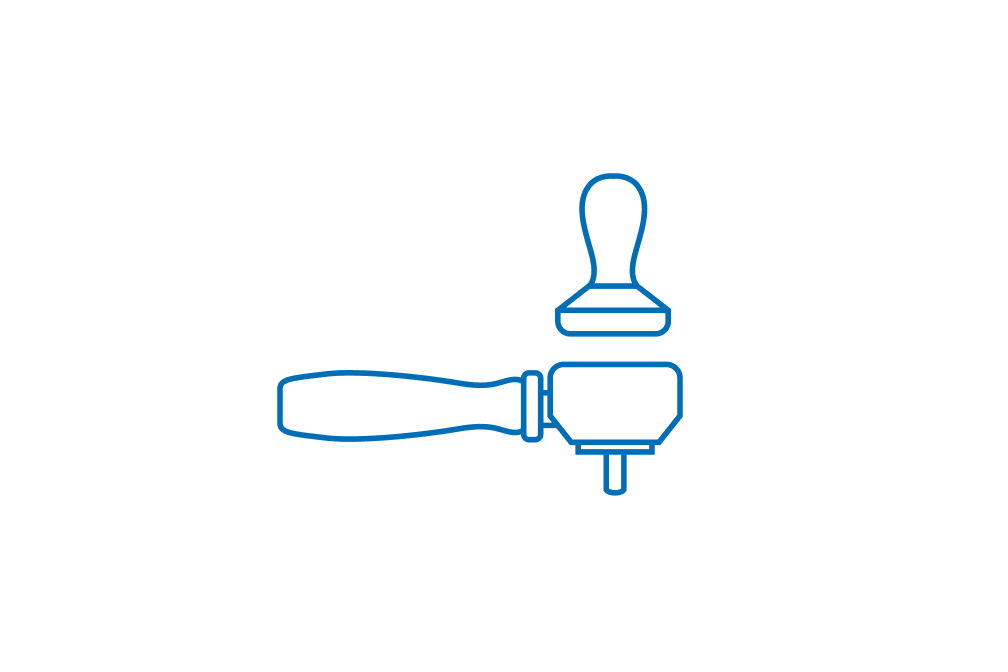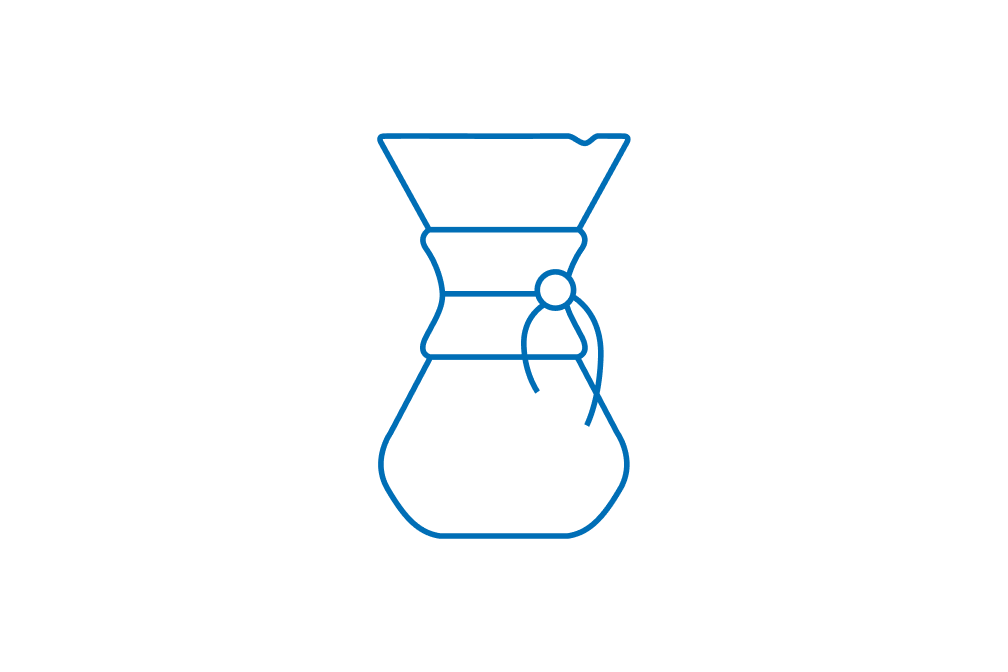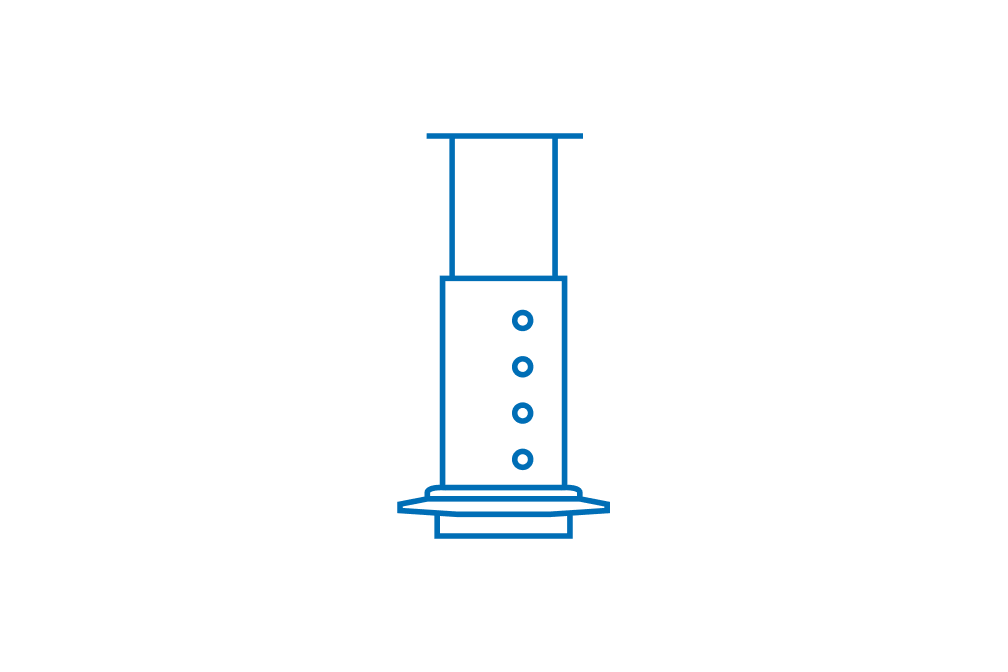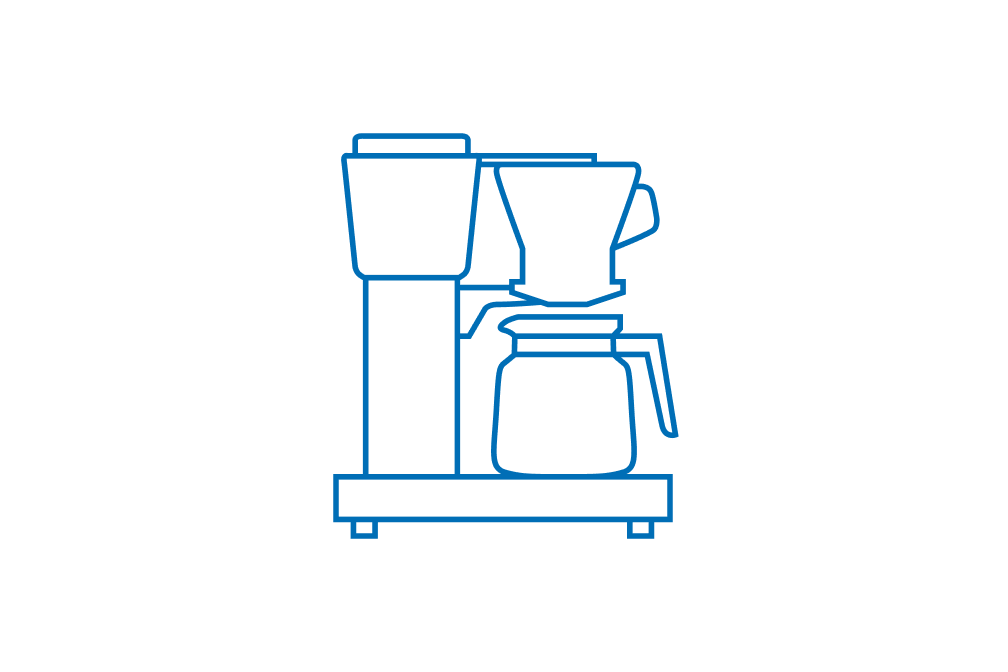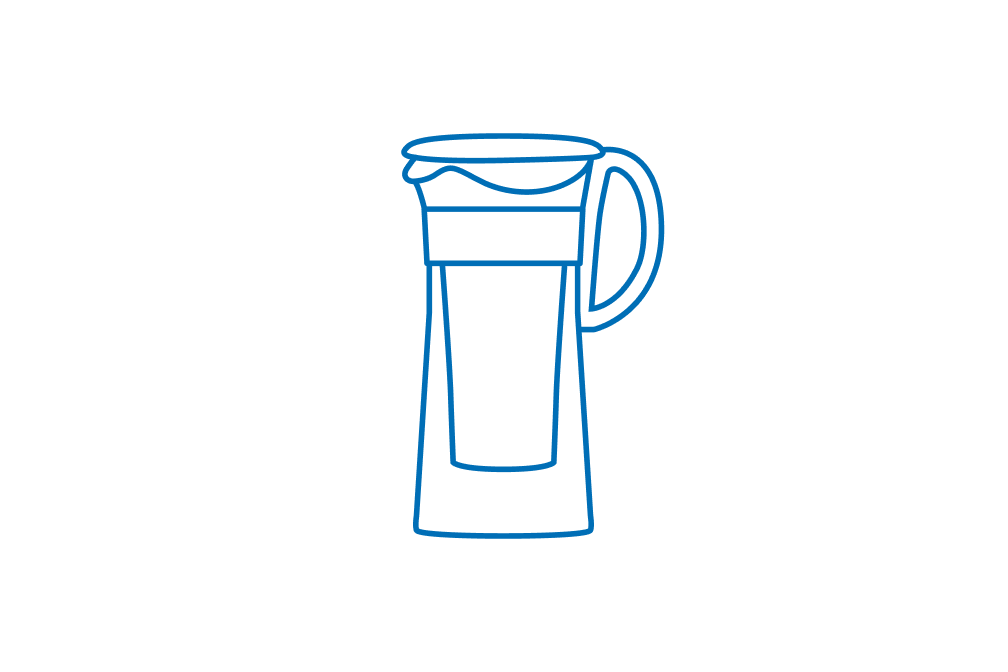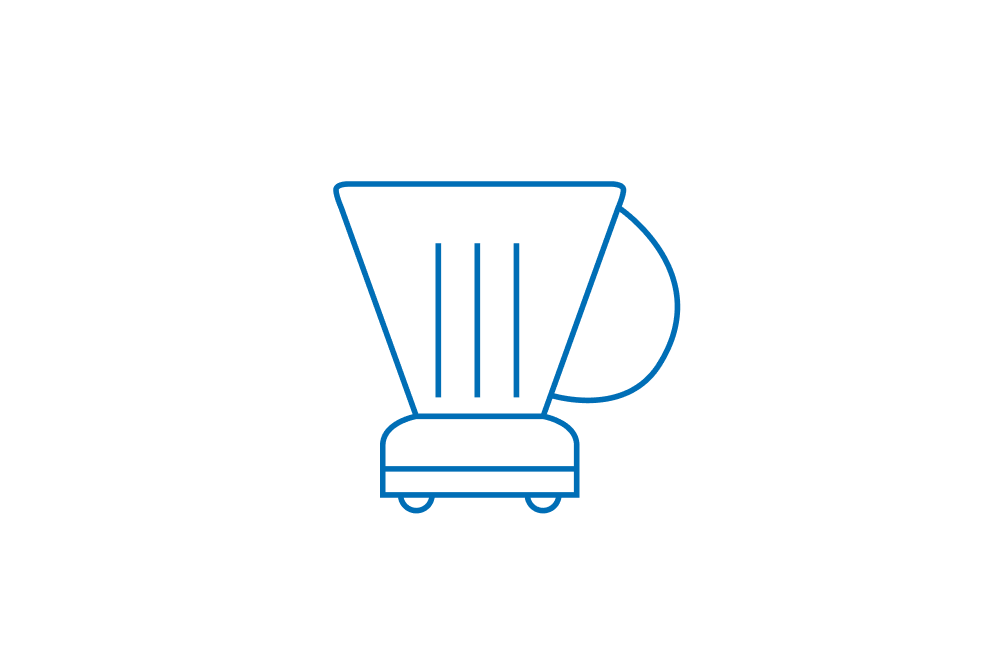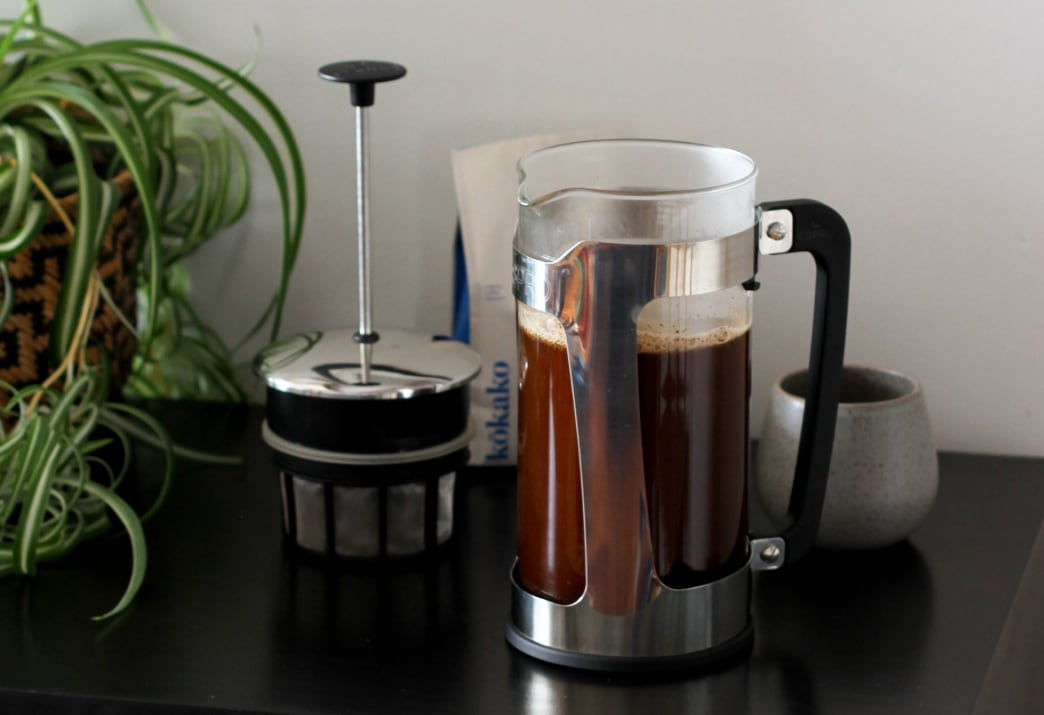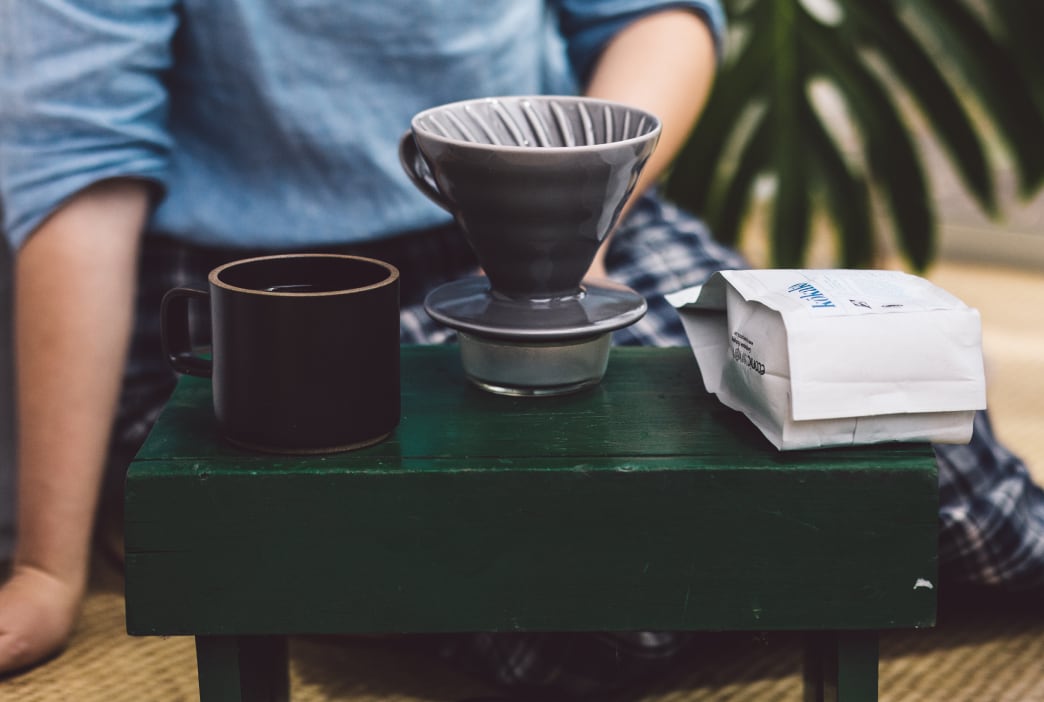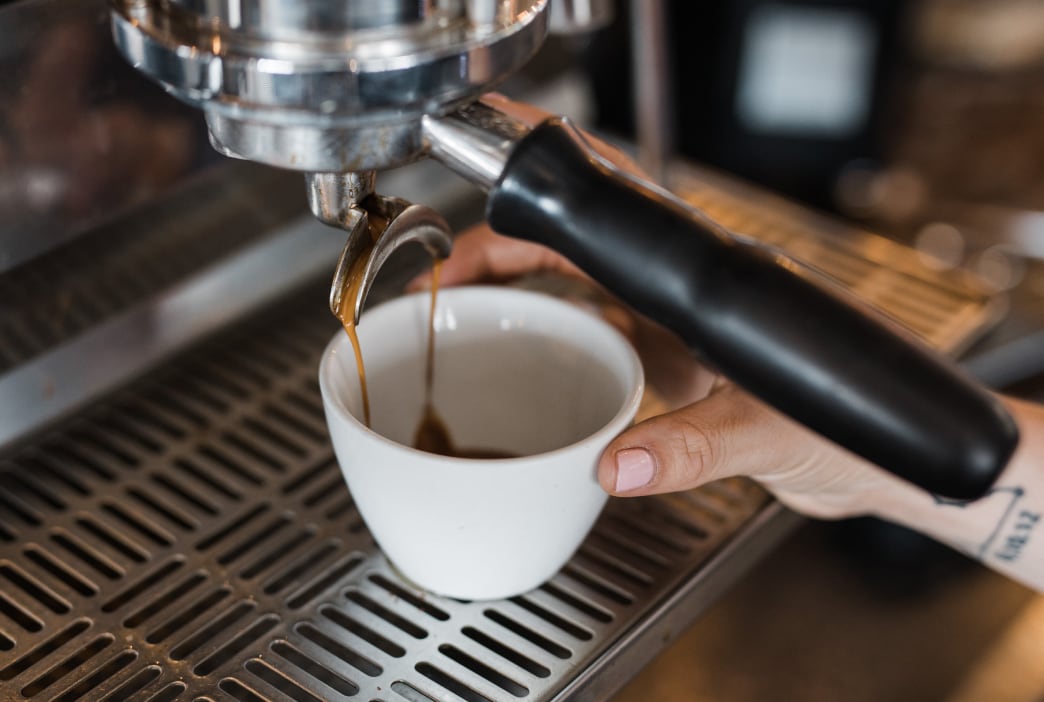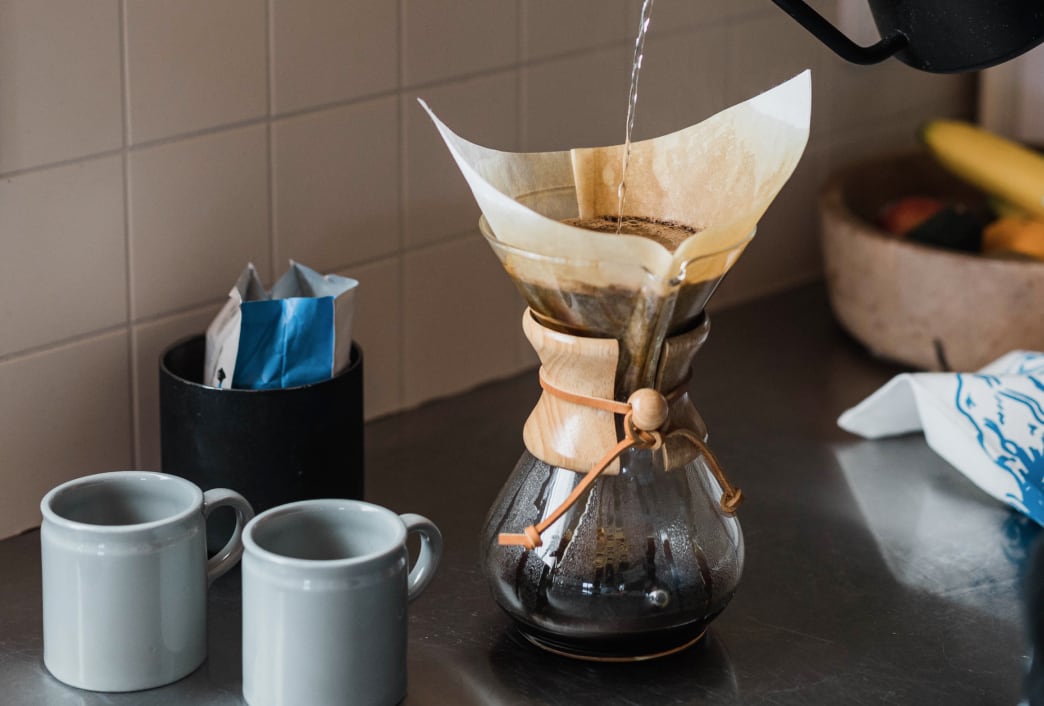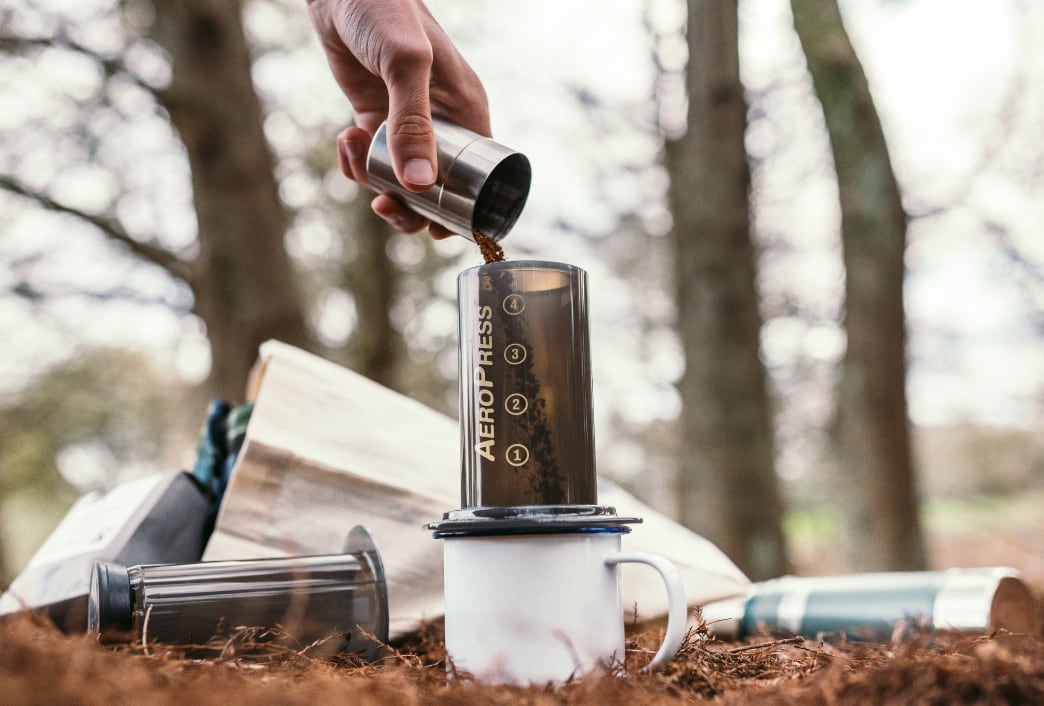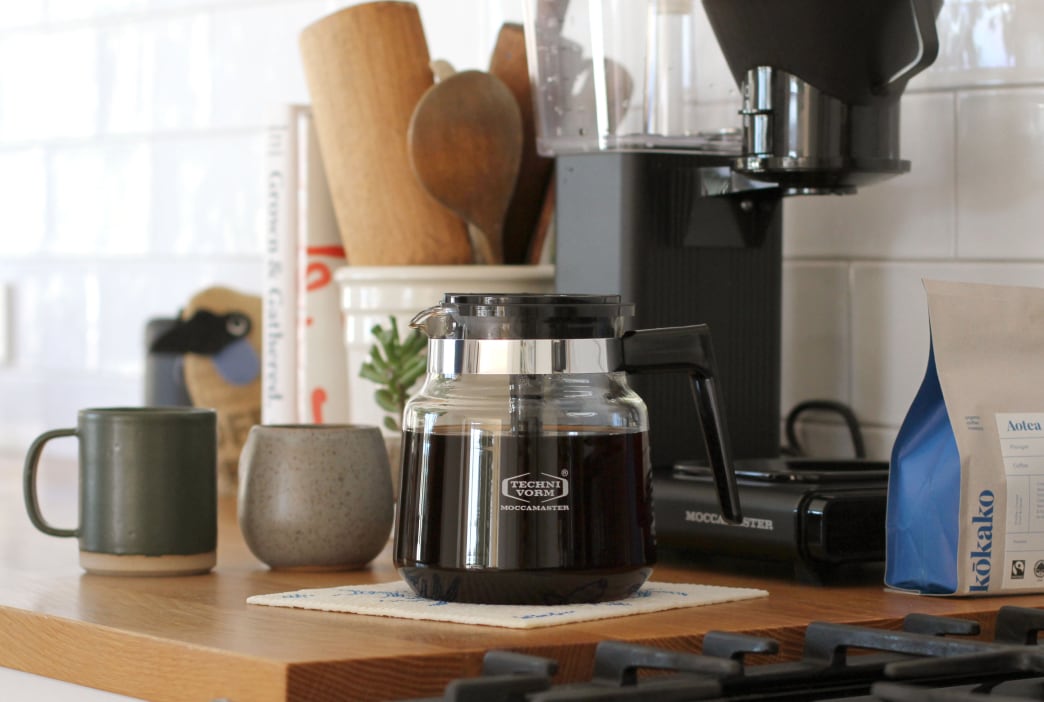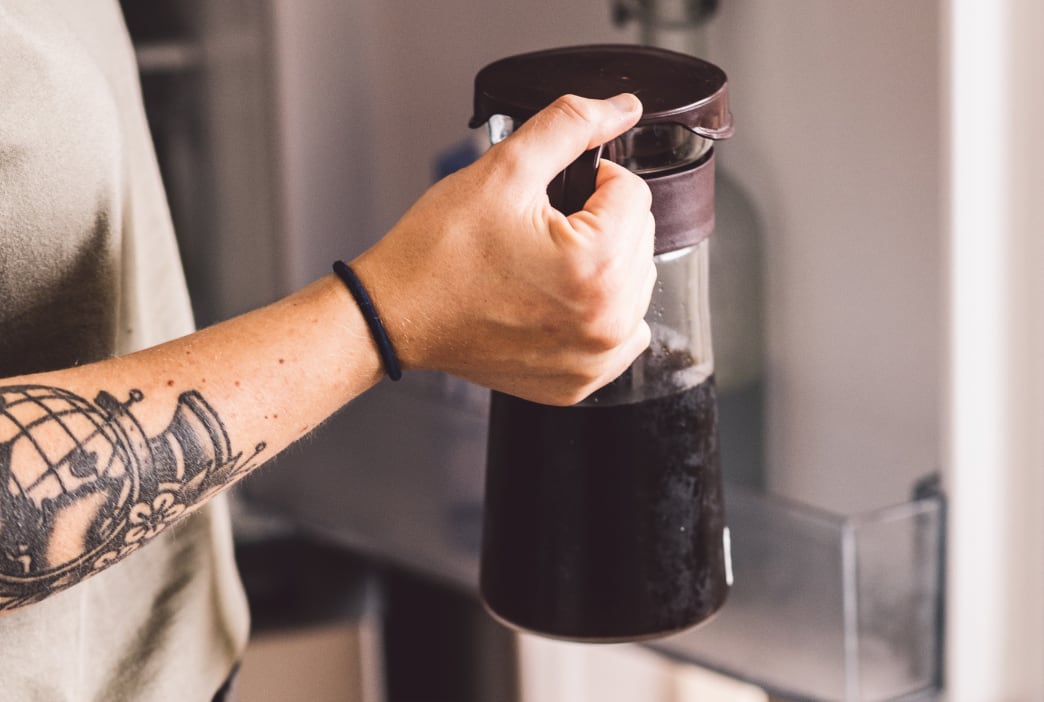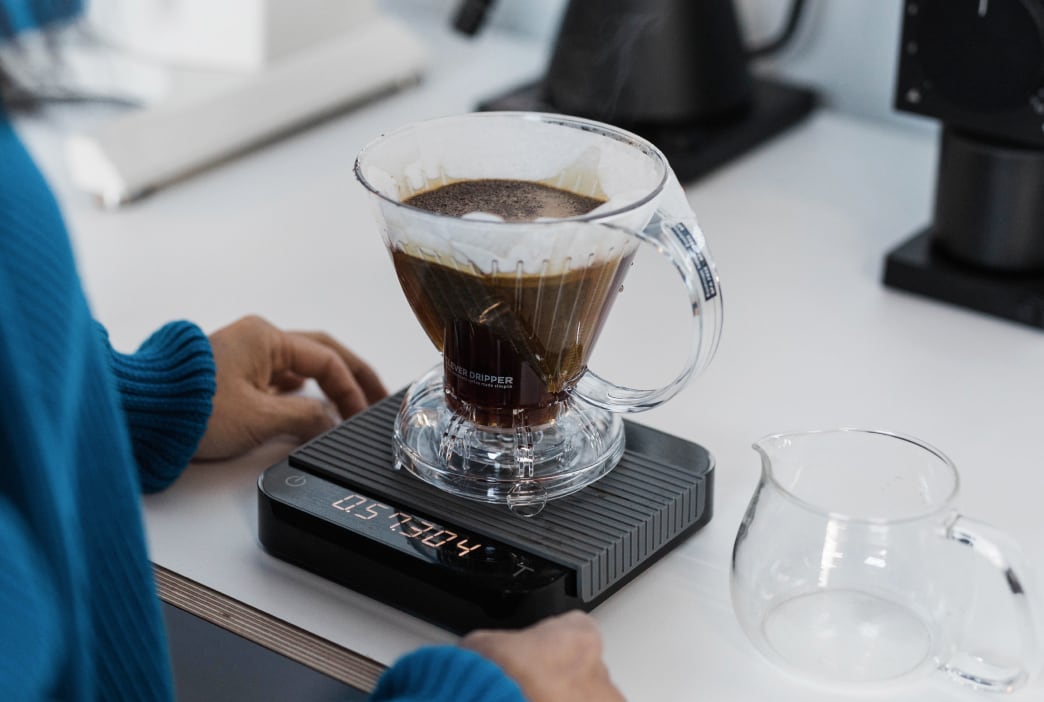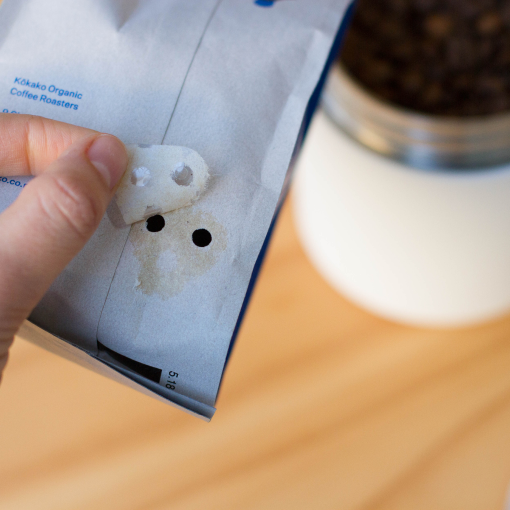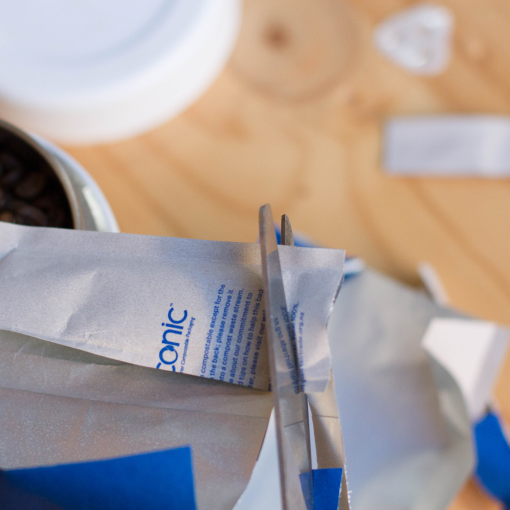This is the second in a series of Origin Trip Reports written by our Managing Director, Mike Murphy, and Head Roaster, Sam McTavish from their trip to Papua New Guinea — August 2018. Click here to read Part 1.

The Drive to Satop and Gilang
Before we piled into the Landcruiser troop carrier Mike made sure we were caffeinated, and we decided to invite Daido Benia (Chairman) and Jim Aviang (Vice Chairman) and their respective wives for coffee with us. Mike always makes a point on origin trips of finding a gas bottle and water so that he can make our team a morning coffee, and because we were all awake by 4.30am (those damn roosters!) we got started on the brewing pretty early. We prepared a fresh pot of Unen Choit coffee for our invited guests, and just like in many coffee origins this was the first time they had actually tasted their own coffee.


We were very appreciative of the cooked breakfasts that were prepared for us each morning – the hospitality and quality of fresh local food provided to us is always delicious and highly nutritious and mainly consisted of rice, cooked taro and sweet potato, along with fresh seasonal fruit (typically orange and tamarillo).

Our first stop on the road from Wasu to Satop was at around 800 meters above sea level (MASL), where we got to see Unen Choit Chairman Molock Terrys original home. It consisted of a typical wooden pole-house with thatched roof, and it was clear it had not been lived in for some time.



We drove higher (slowly, over the previously described limestone road) before we reached the village of Satop at 1500 MASL. This cluster group welcomed us with a sing-sing and then performed a special drama (play) for us. They held up a piece of bamboo and asked Chairman Daido Benia to come forward and look through the other end of the bamboo tube. Both ends of the tube were open and this signified the connection and communication between the UC executive team and the coffee farmer clusters. Next Henrik (from John Burton Limited) and Mike were asked to come forward. Another bamboo tube was held up and we were asked to look through it. We could not see anything as it was covered with taro leaf. We were asked to break through the taro leaf which revealed dried coffee parchment which they poured into our hands. This signified the connection that we (as roasters and coffee importers) now have direct with the coffee farmers of Satop cluster.


During the official welcome we asked for some hot water and were able to make a large plunger of their coffee for selected representatives of the cluster – you can never underestimate the gravity of this; brewing hard-working farmers a cup of their own coffee for the first time. We also handed out the coasters that Kōkako provides to cafes and coffee subscribers in New Zealand – this has an image of UC Manager Molock Terry on the front with tasting notes and a producer profile on the back.





We inspected one of the parchment drying sheds at Satop which was really well constructed and had three tiers – parchment is initially dried on the bottom shelf, then rotated upwards until it is dry before packing into bags ready for storage.



After Satop we drove for another 1.5 hours to the Gilang area – this farmer cluster group is further up the mountain range towards Kabwum Station and is 1750 MASL. On arrival we observed another drama – this time cooperative members were dressed in traditional attire and the drama involved initially one farmer trying to pull a rock along the ground with a rope. He was then joined by another farmer, but even the two of them could not pull the rock together – it was just too heavy. Once a group of farmers combined their strength they were able to pull the rock along the dirt ground – this drama symbolised the power of collaboration and cooperation – the very essence of Fairtrade where farmers work together for greater outcomes.



Following the drama there was an official opening of the new parchment storage shed and associated office/shop at Gilang. We were encouraged to take a seat in a small room inside this building where we were presented with a bounty of fresh passionfruit, tamarillos and mango – we were again extremely humbled by the reception and the generosity of this cluster group.



We then followed the Gilang leaders for around 15 minutes deep into a gully and through an extensive network of coffee farms, and even a local cemetery. We observed one of their pulping stations and provided some constructive feedback on their fermentation methods. We viewed what was again another very impressive solar drying shed with parchment drying on double-decker beds. We powered back up the hill (it was a great workout!) to a reception that included reciprocal gift presentation and speeches. Throughout each cluster group farmer meeting we have made a point of ensuring that the conversation was two-way, allowing farmers to ask us questions and for us to find out more about their coffee gardens and systems.




On to Kabwum and Derim
After the official welcome ceremony concluded at Gilang we piled back into the Landcruiser troop carrier to ascend higher up into the highlands. With our bodies a bit creaky from intense undulations of the road we stopped at both Kabwum Station and then further up the road. At this stage of the journey the temperature was dropping as we had reached the same height as the clouds. Here we discovered quite an amazing glade of native bush that reminded us all of Aotearoa – it made quite the spot for a quick team photo with the cliff dropping off to seemingly nowhere.



After ascending we then started a slight decent across the mountain range and arrived at our final highlands destination of Derim at dusk – not ideal as the local farmers had been waiting for us for some time and were all dressed in traditional cultural attire. We appreciated their sing-sing and generous welcome but it would be fair to say that we could not experience it as well in the fading light. We were provided another excellent facility to stay the night – a recently built Unen Choit dwelling that contained two bedrooms and a large lounge on the top floor, with a parchment storage facility and goods & provisions store underneath. The building had been constructed to a high standard and in part paid for by Fairtrade premiums through the Unen Choit Cooperative.



After a fresh water wash in the local stream at 5am we headed down to view a local farmers coffee garden (often farmers prefer to call their farms gardens in PNG). We discussed plant husbandry and agronomy in quite some detail here with the farmer and the representative from CIC. We noted that the soil conditions were relatively dry and the tree stock was getting quite old, despite the practice of splicing the tree on its trunk to encourage new shoots. Shade cover was good but we felt that this particular farmer could be achieving greater yields with a greater focus on plant husbandry and the planting of newer coffee tree varietals that were suitable for the soil conditions of this farm.



We discussed farmer support with Daniel from CIC and he noted that in recent years the CIC has not been able to get as many coffee farm extension officers out to remote areas in which to provide training and guidance. This puts the onus back on the Cooperative Management to facilitate and empower farmers in best-practice techniques. Daniel also noted that the CIC has been distracted by the recent Coffee Berry Borer outbreak in other provinces but thankfully this pest is not yet prevalent in the Morobe province. This same morning in Derim we visited another coffee pulping station that was strategically positioned next to a plentiful supply of water from a fresh stream. Again we reviewed their fermentation and washing methods and provided feedback on best-practice via the Unen Choit Management & Fairtrade.
Afterwards we were taken to the solar drying sheds – again these are some of the best we have seen in Papua New Guinea and are built and managed to a high standard. Mike has visited around 10 different cooperatives across different parts of PNG and have found the Unen Choit drying sheds to be of an excellent standard. We met the gentleman who oversees the Derim drying shed; he was not able to speak (even in Tok Pisin) but communicated with us via writing – he was a really conscientious man.


After the morning coffee farm visit we returned to the main Derim station where the Saturday market was taking place – there was a noticeable increase in people, many of whom had walked for hours to come and meet us and participate in our question and answer session. This was by the biggest address we were to make during our trip – we think there were around 1000 engaged coffee farmers and their families who turned up for this address. Even more impressive was the fact that it was stifling hot and humid; we were kindly provided with umbrellas and everyone sat there and listened to us in the hot PNG sun. Thankfully the roof of the market provided some respite for people.


During this meeting we gave gifts to 10 cluster group leaders from in and around Derim station, after which UC Chairman Molock Terry opened up the conversation for questions and answers. Unen Choit is still a relatively new cooperative (10 years old) and a lot of the people at the meeting were not yet members – some were there to hear what UC could do for them and determine whether they wanted to join the cooperative. It took a while to get engagement from this huge group – it took an elderly farmer to stand up and encourage the group to engage with us before we got some questions. He was frustrated that many farmers said they had issues in private, but that they were hesitate to speak up in an open forum. This got a few people on their feet and soon the conversation got pretty intense.

It was clear that this more remote community was not as aware of the benefits of the Fairtrade cooperative system as many other cluster groups, and Gabriel from Fairtrade ANZ illustrated this by having all parts of the supply chain line up in ‘human form’; from the coffee farmer, to the cooperative management, to the exporter, the importer (represented by Henrik of JBL), then to myself and Sam from Kokako and then onto Josh who symbolised the New Zealand coffee consumer. This real-life representation of the supply chain went some way in articulating to the farmers what happens to their coffee after it leaves their district in the form of parchment.
The conversation went on for some time and we were excused while Molock spent more time educating the assembled farmers in the intricacies and benefits of the Fairtrade cooperative system. We packed our gear and jumped in the Landcruiser yet again for the 4.5 hour trip back down to Wasu.

Thank you for reading all the way to here, we hope you enjoyed this glimpse into where our beans journey from. This is the second in a series, our last PNG blog post will follow shortly.
Share
Back to articles
